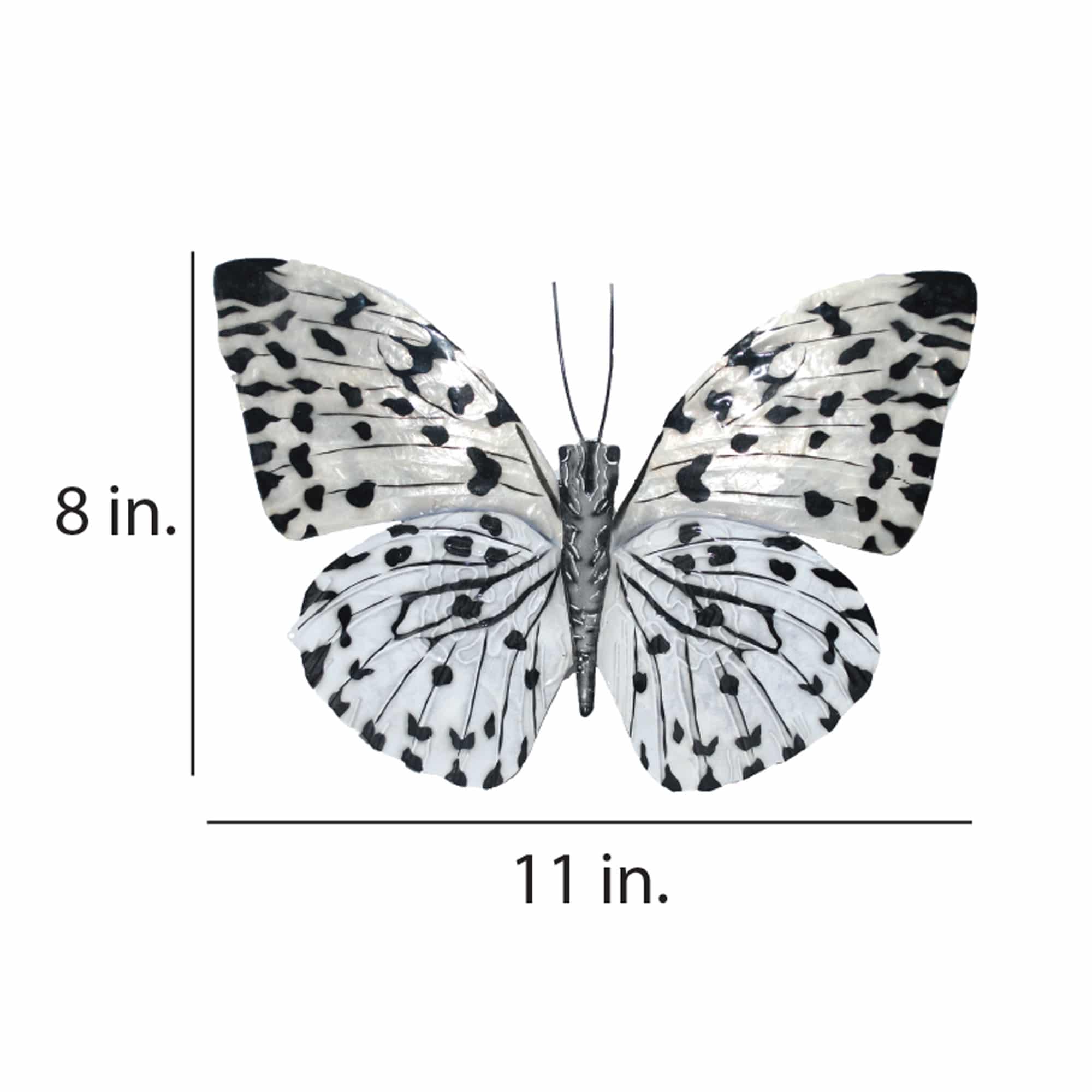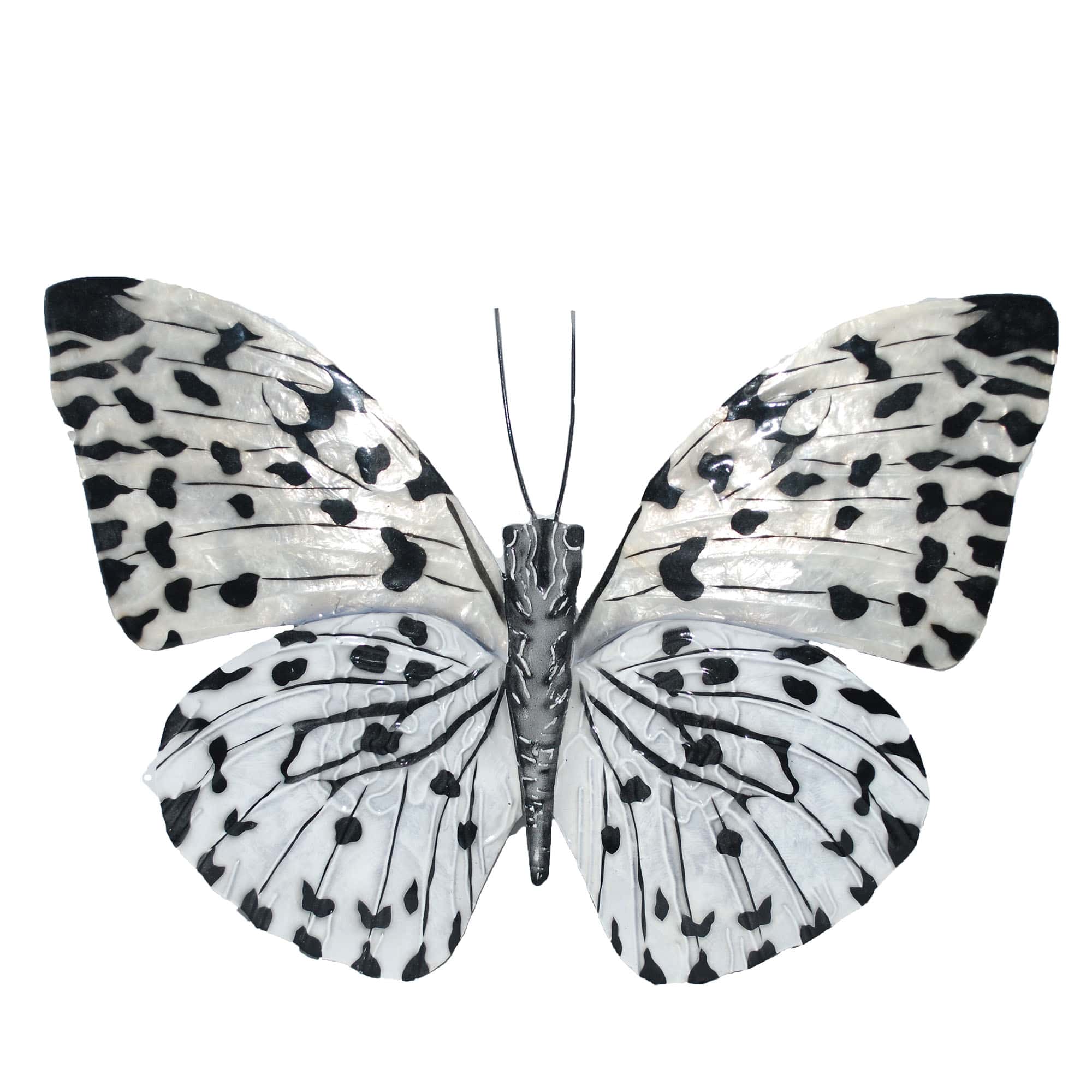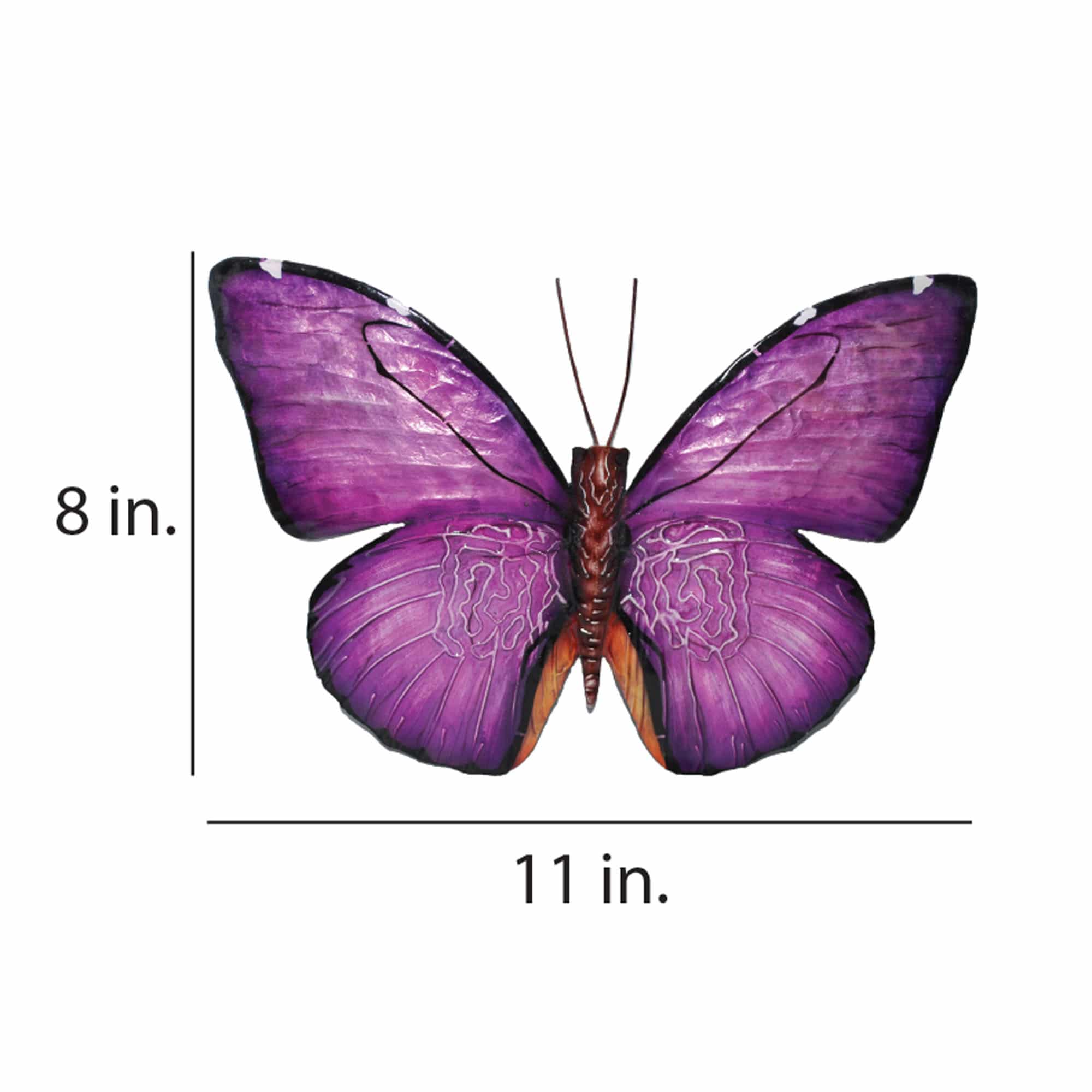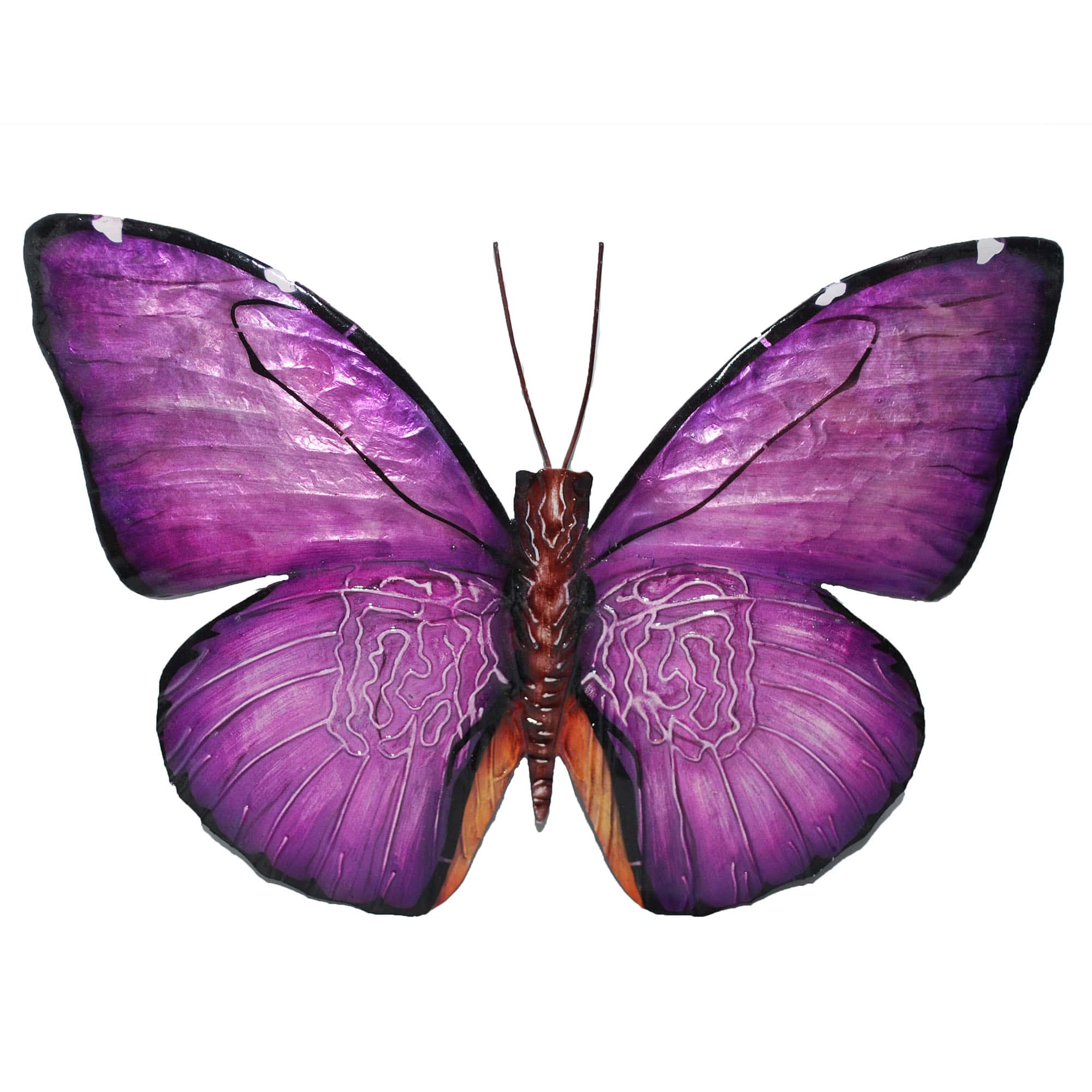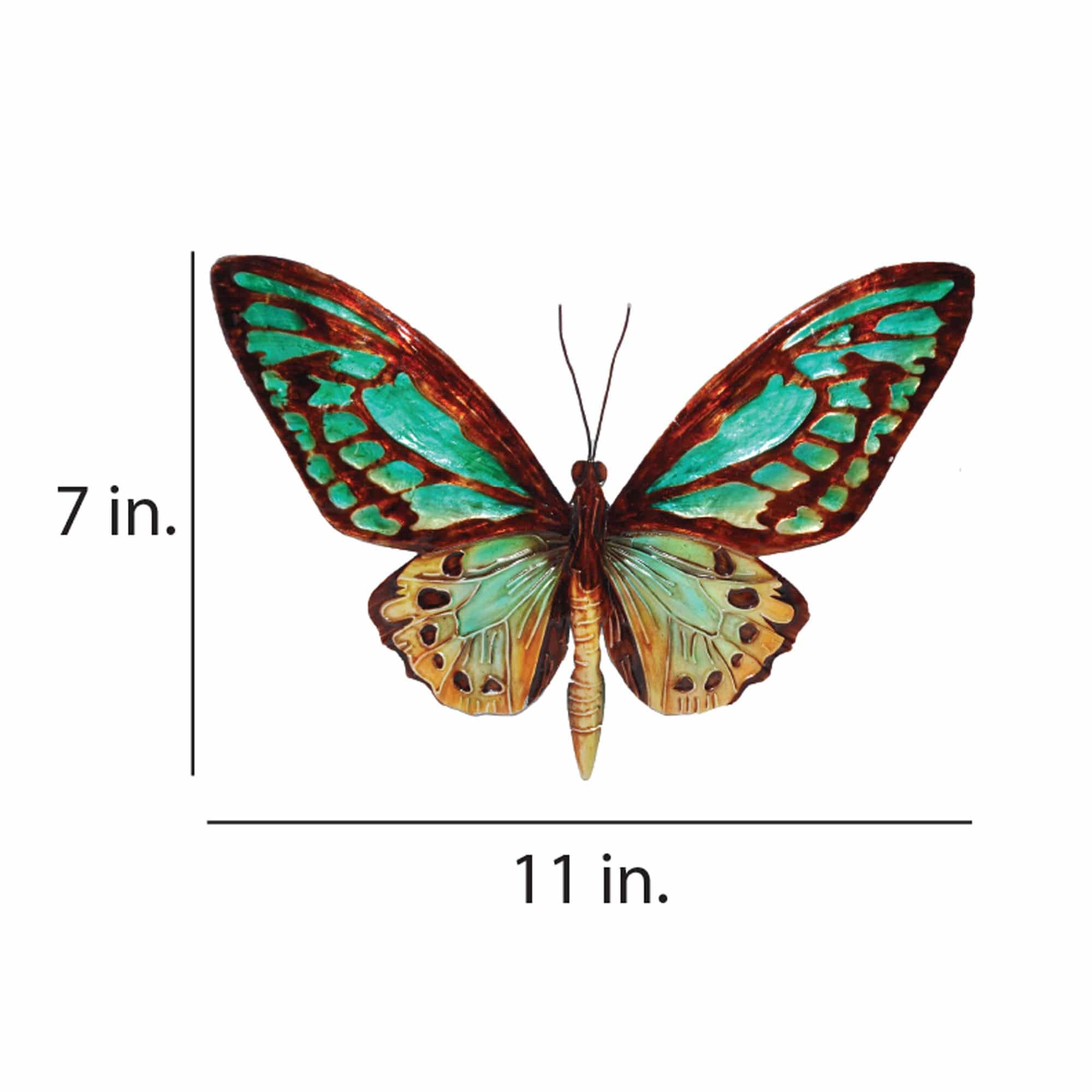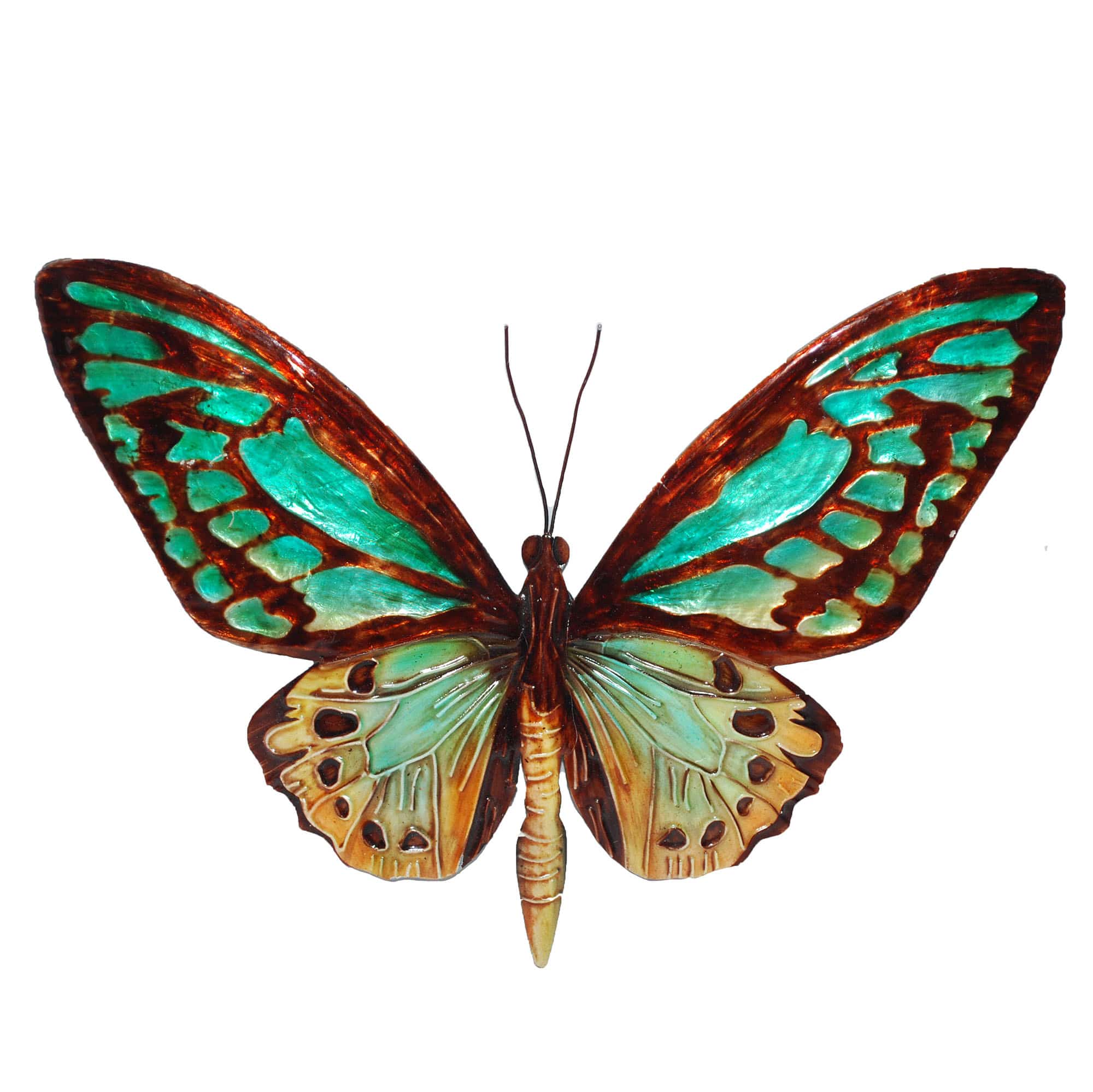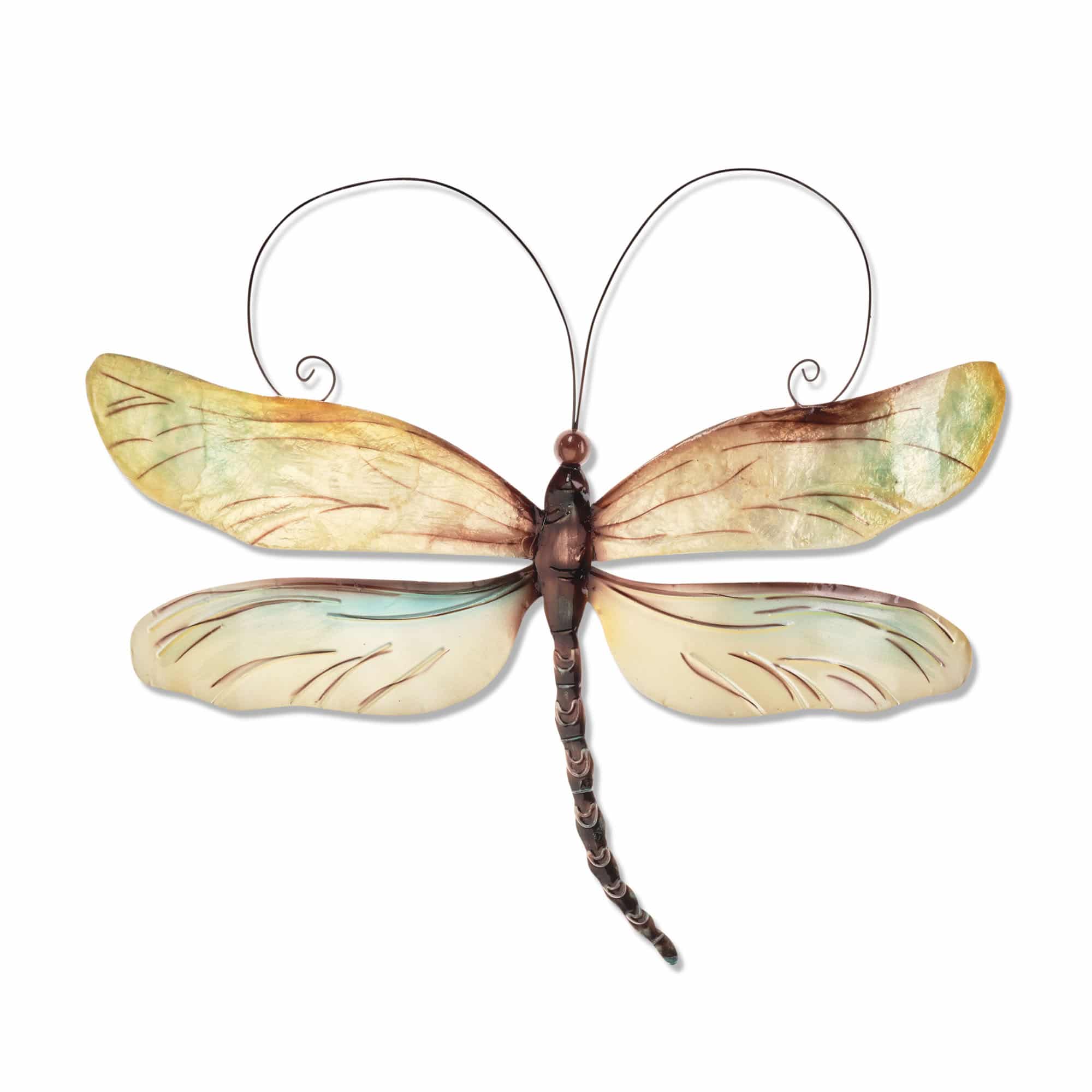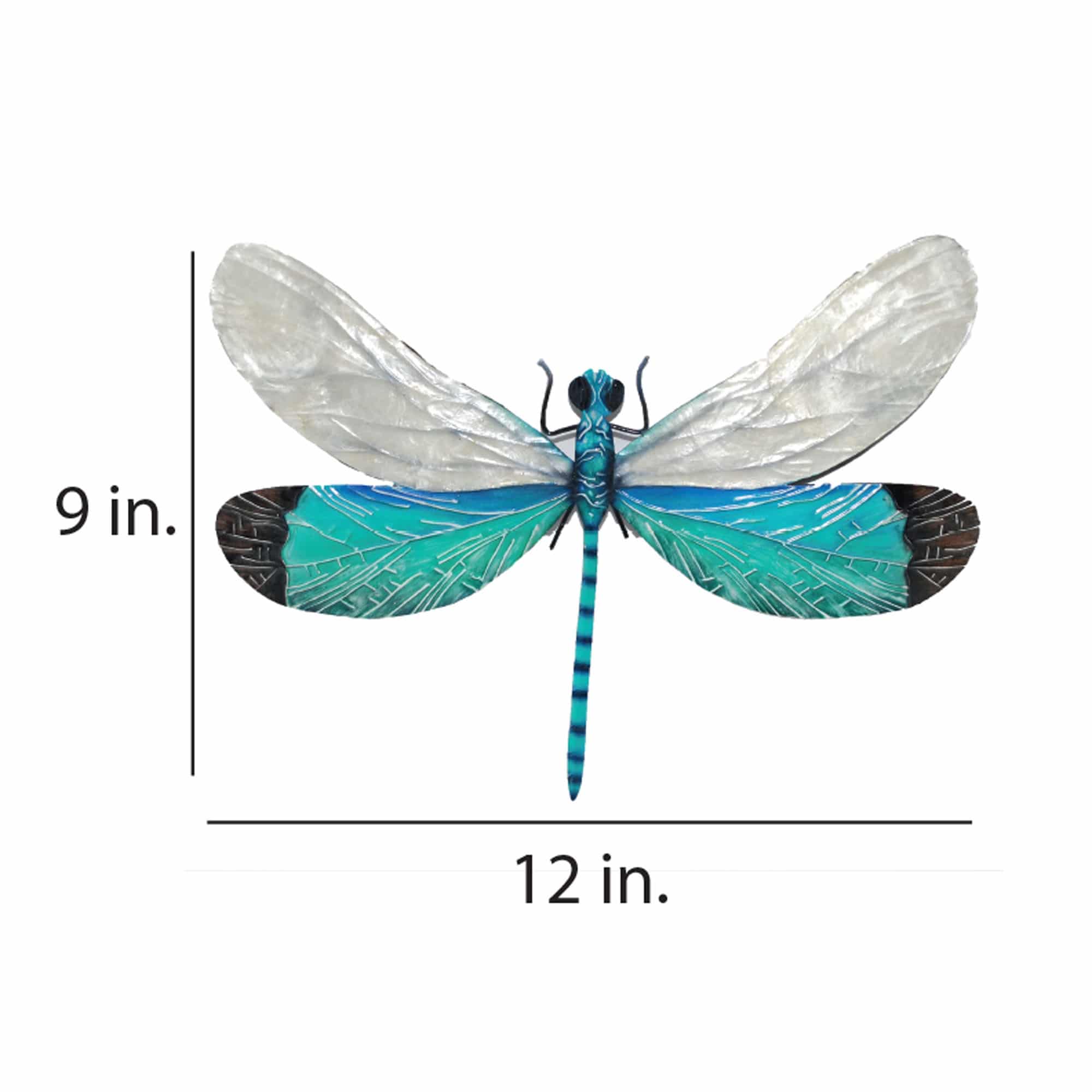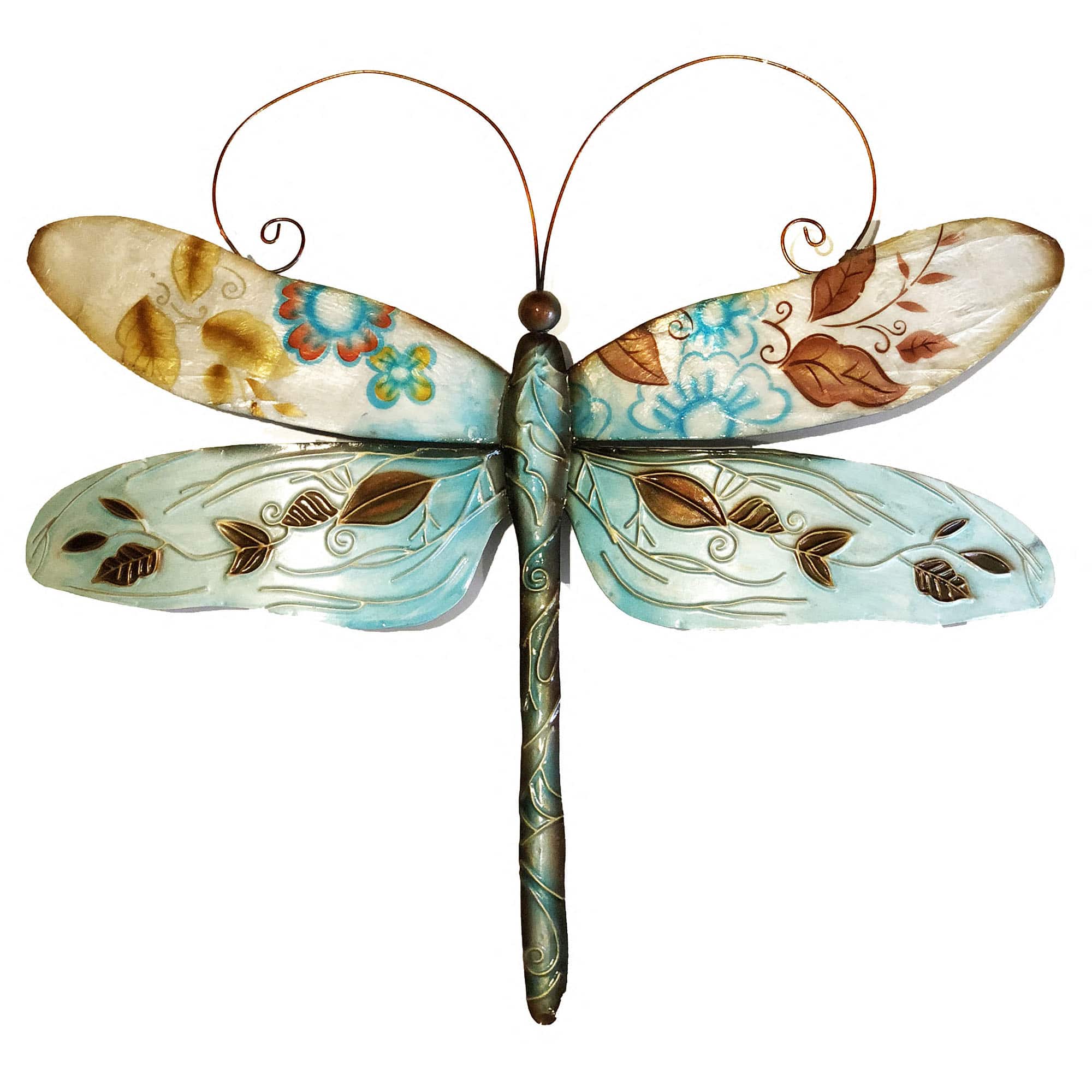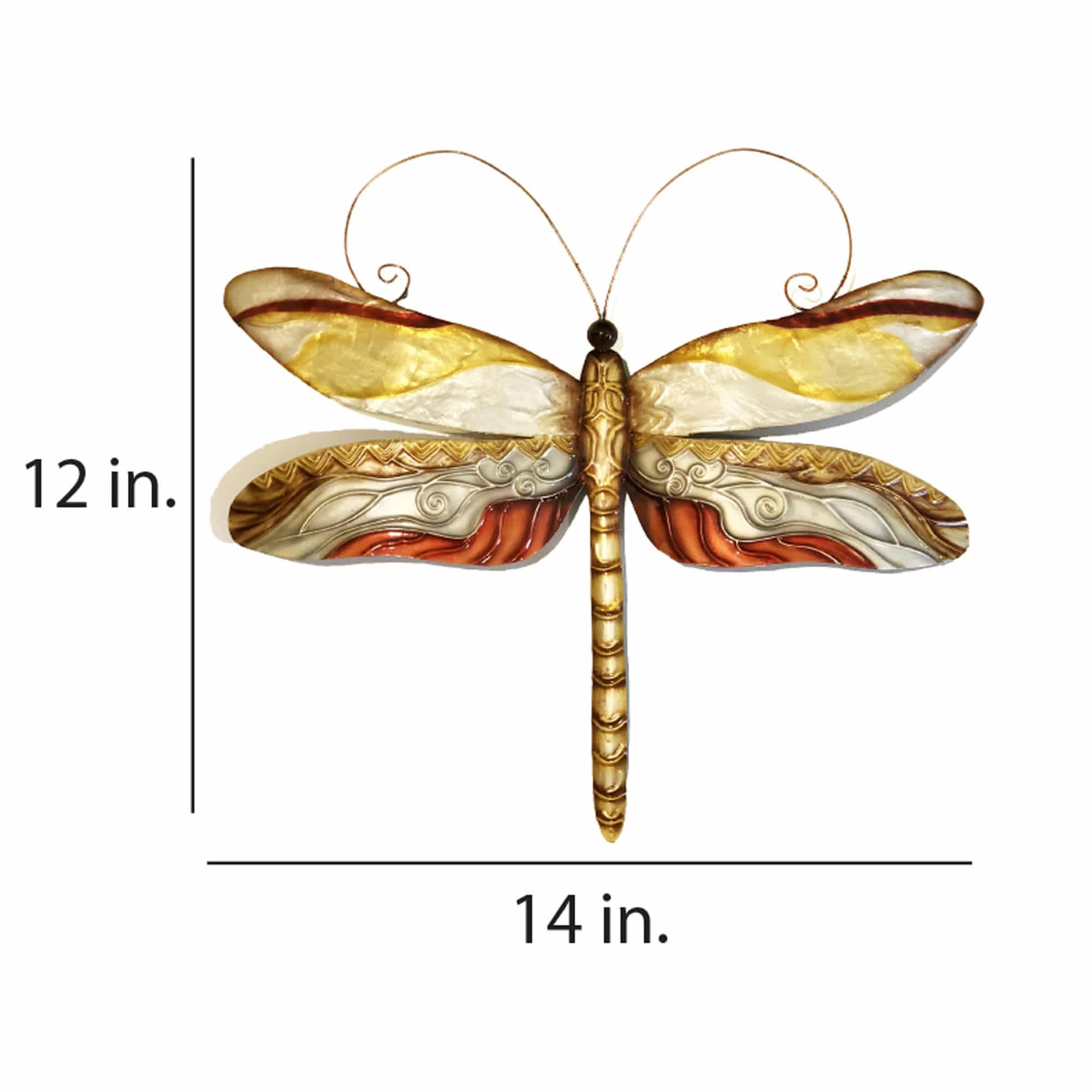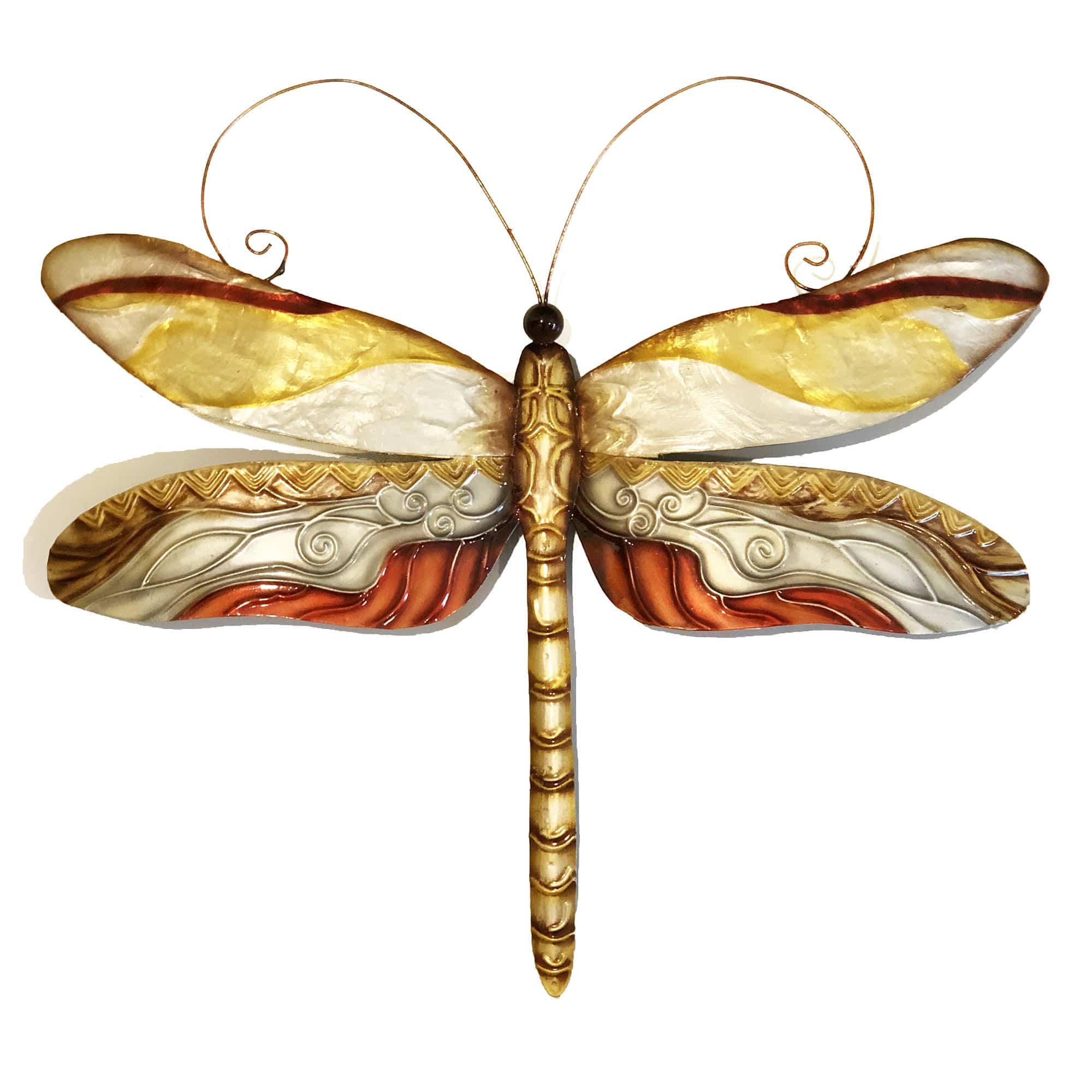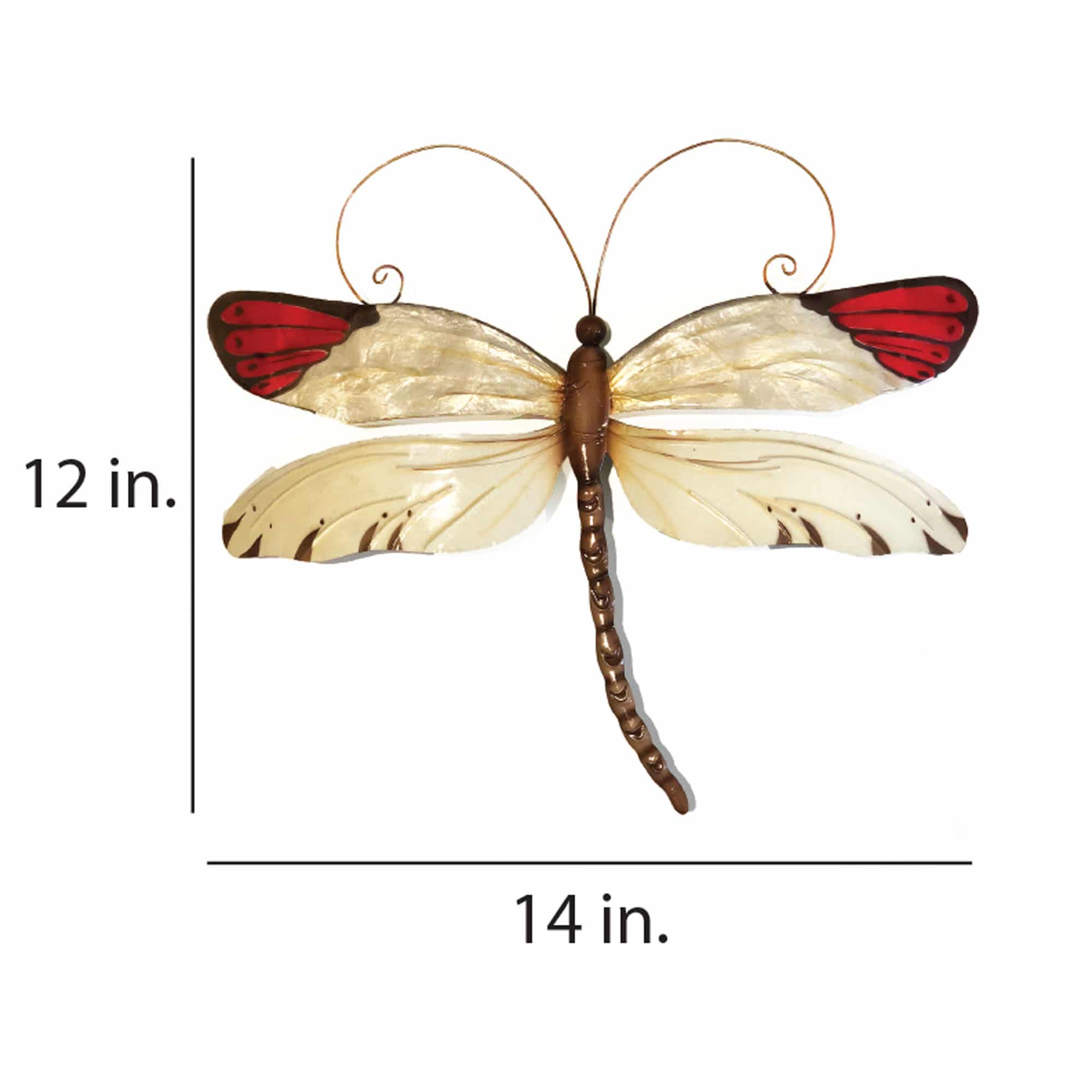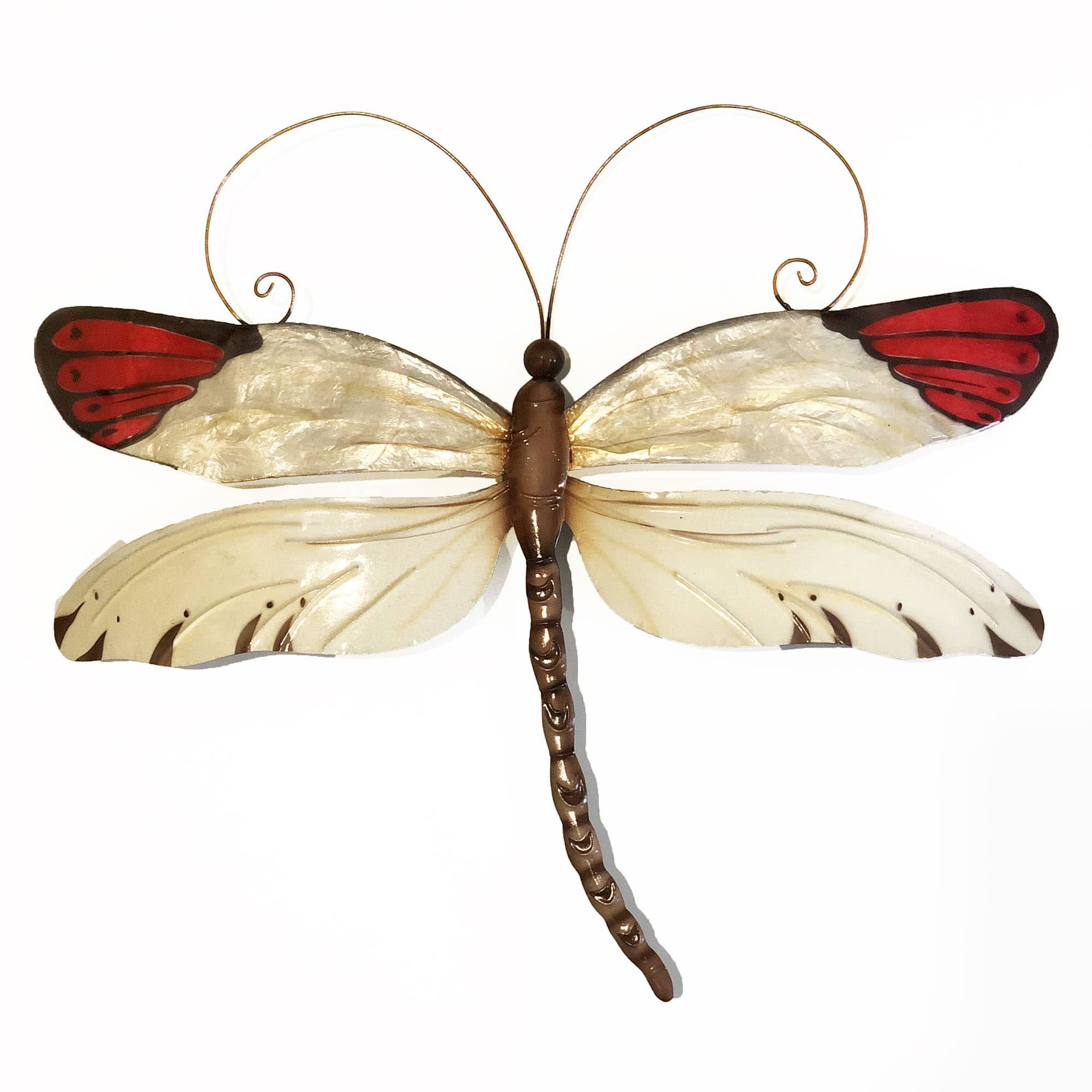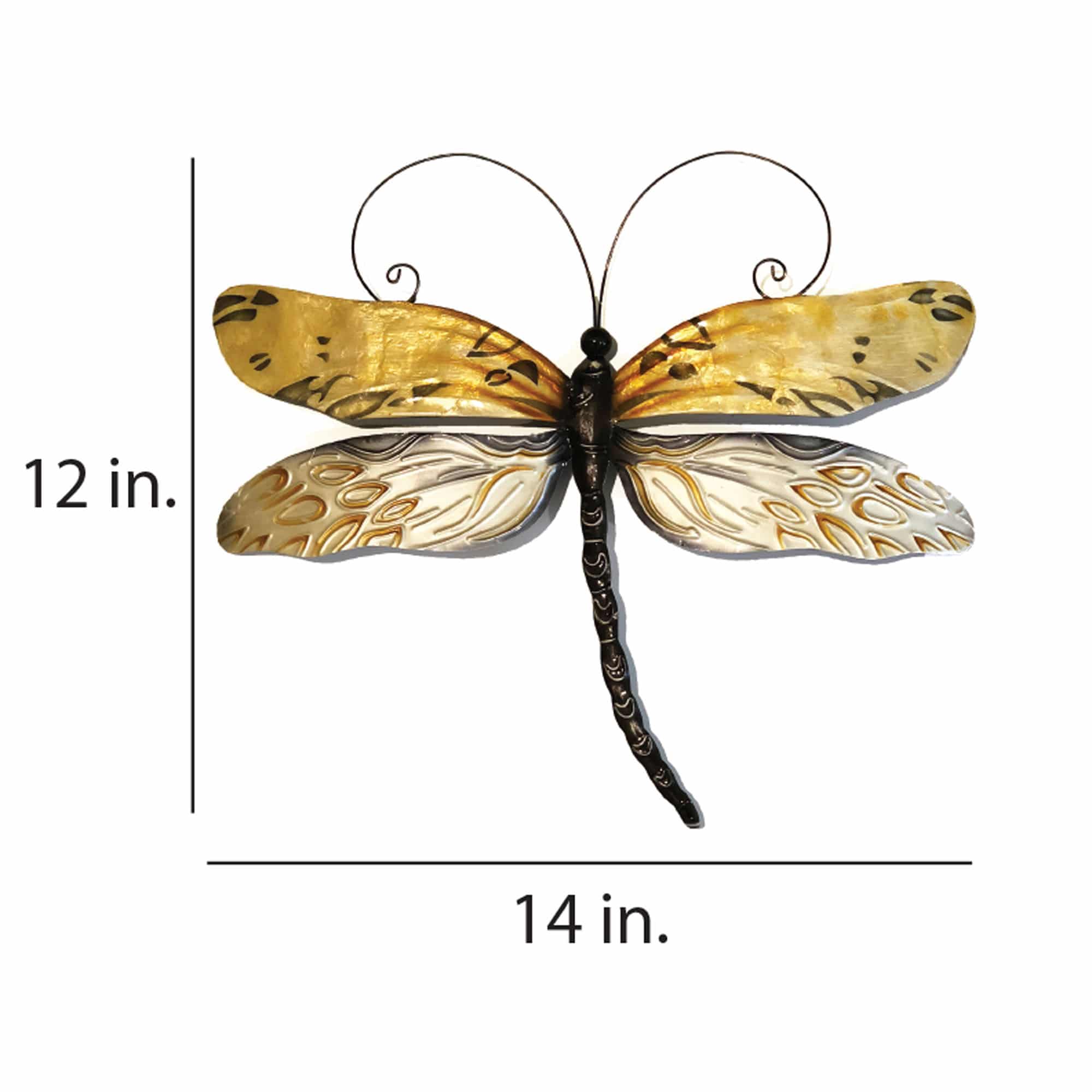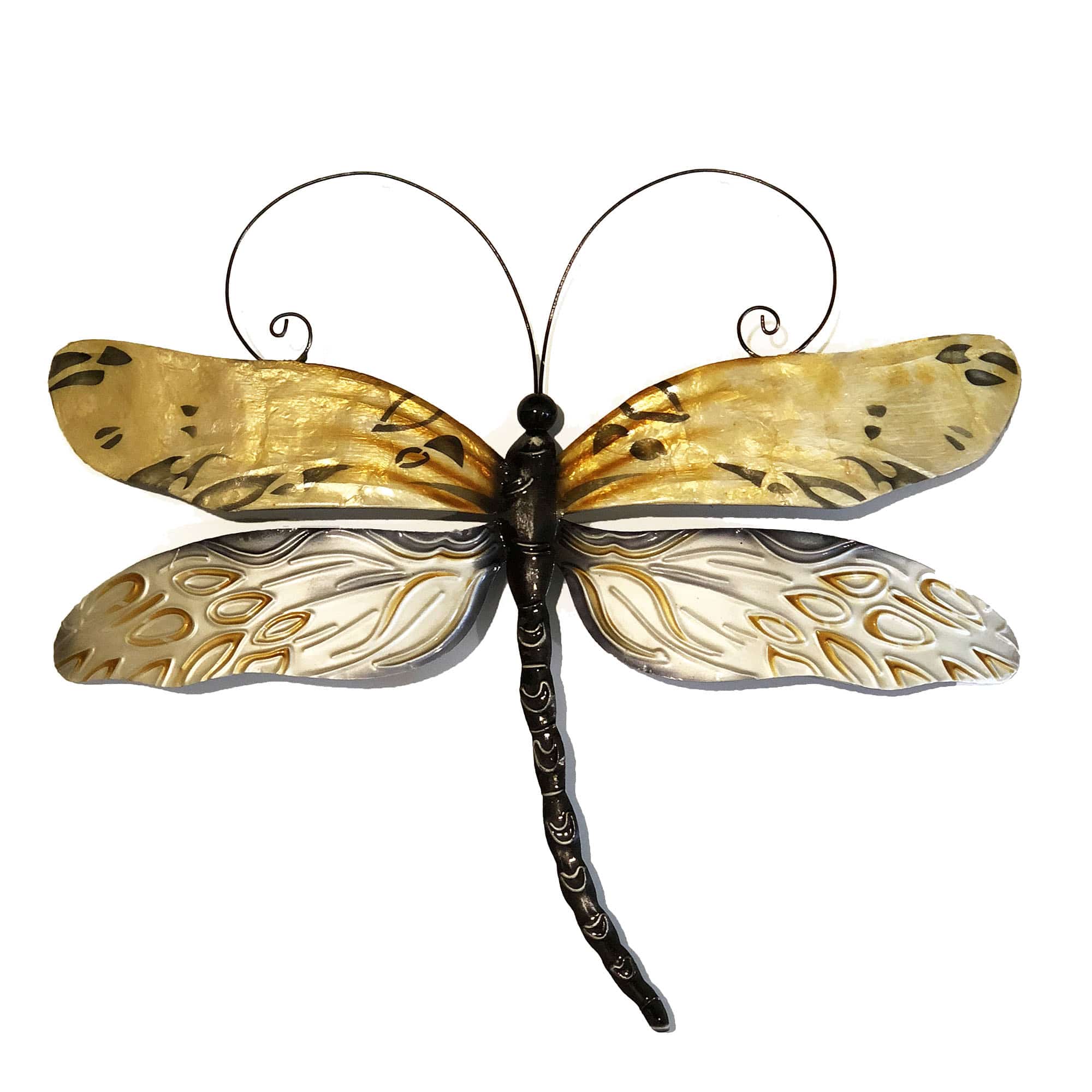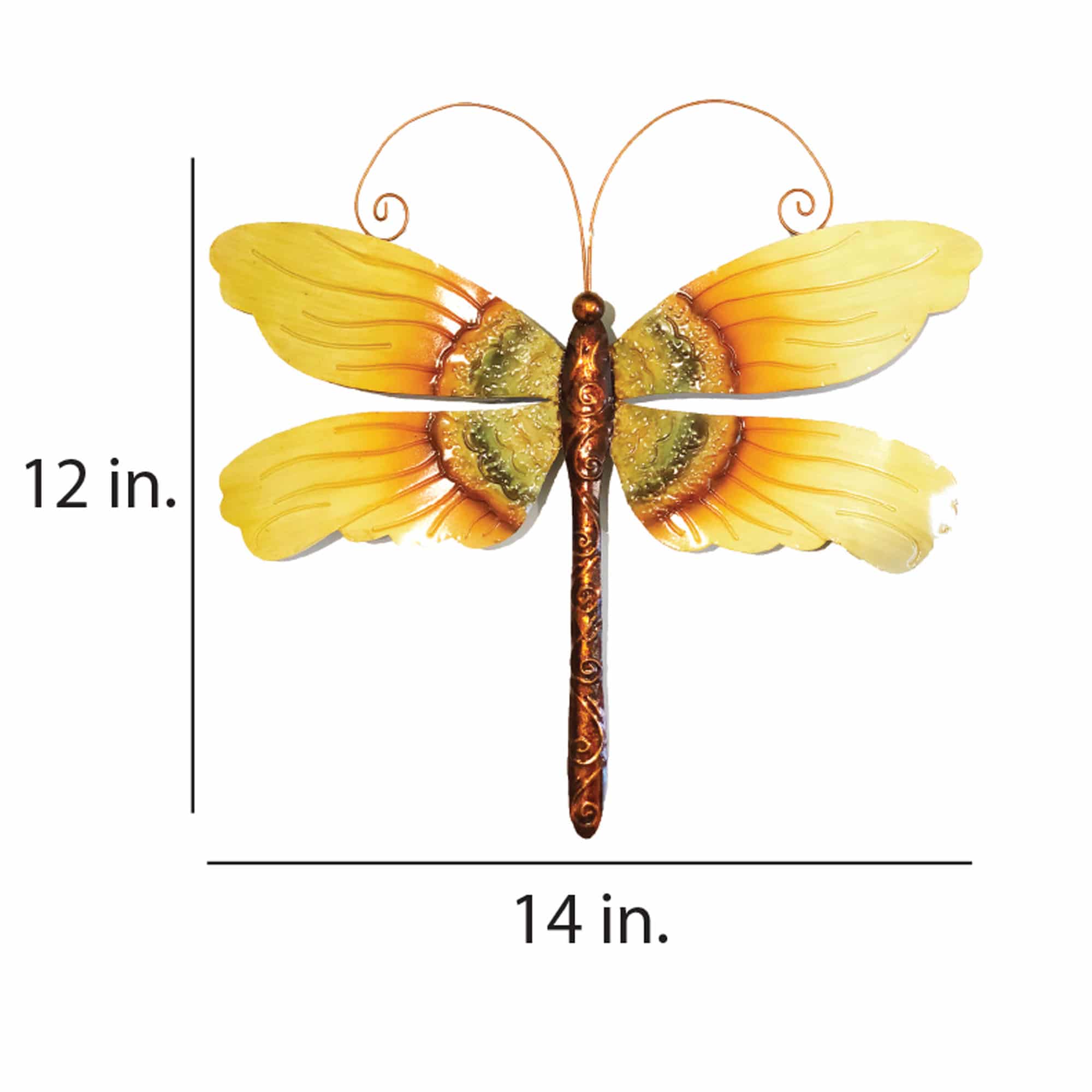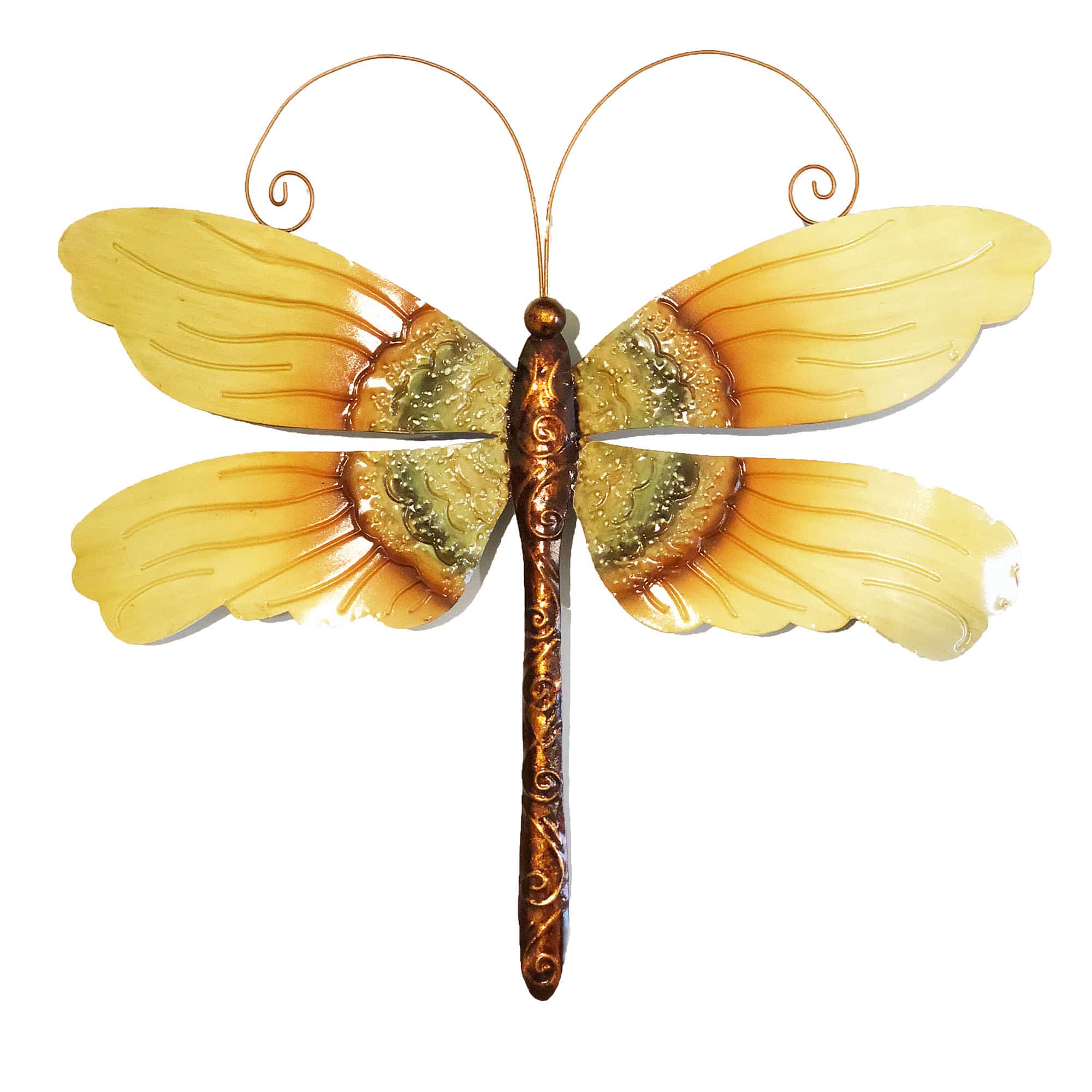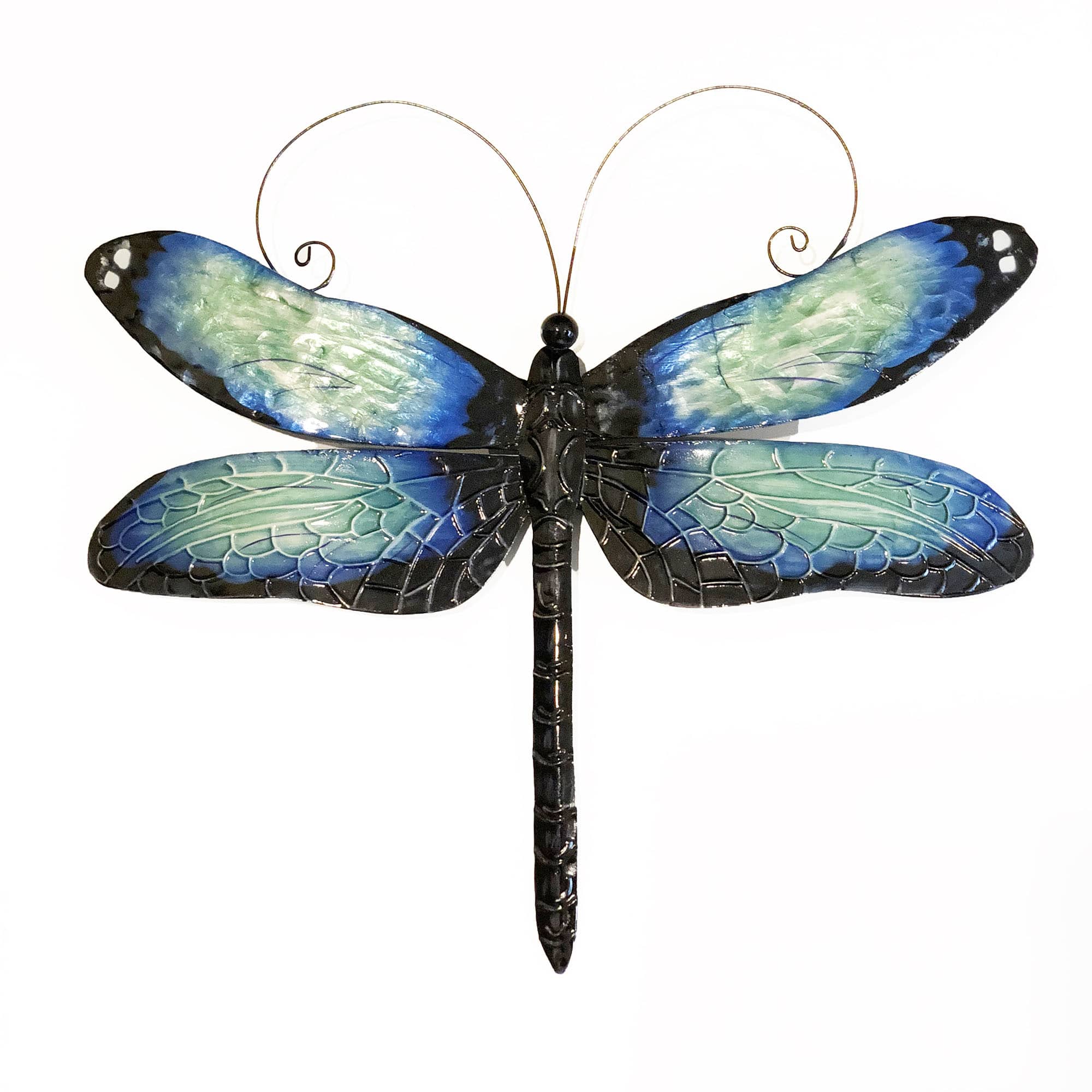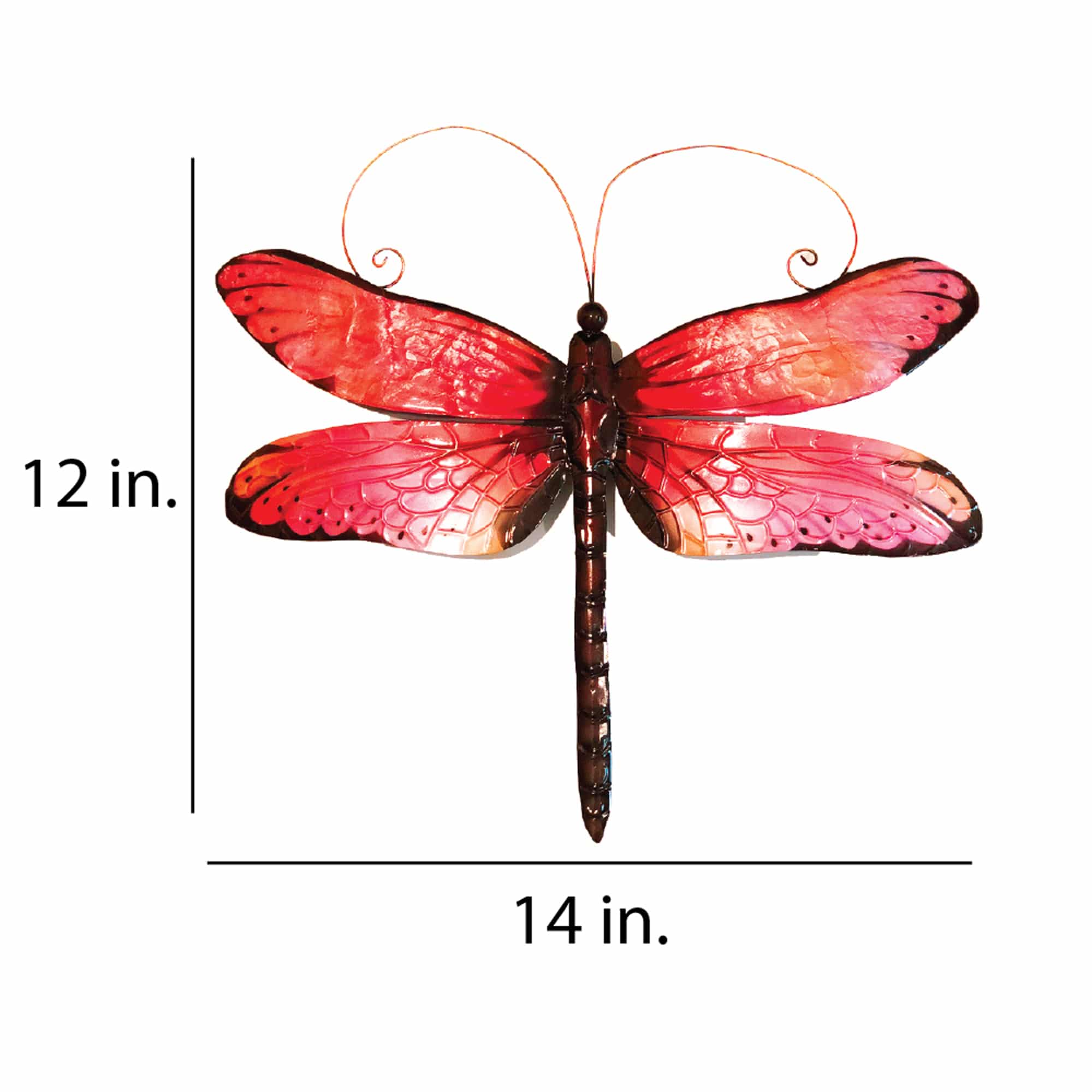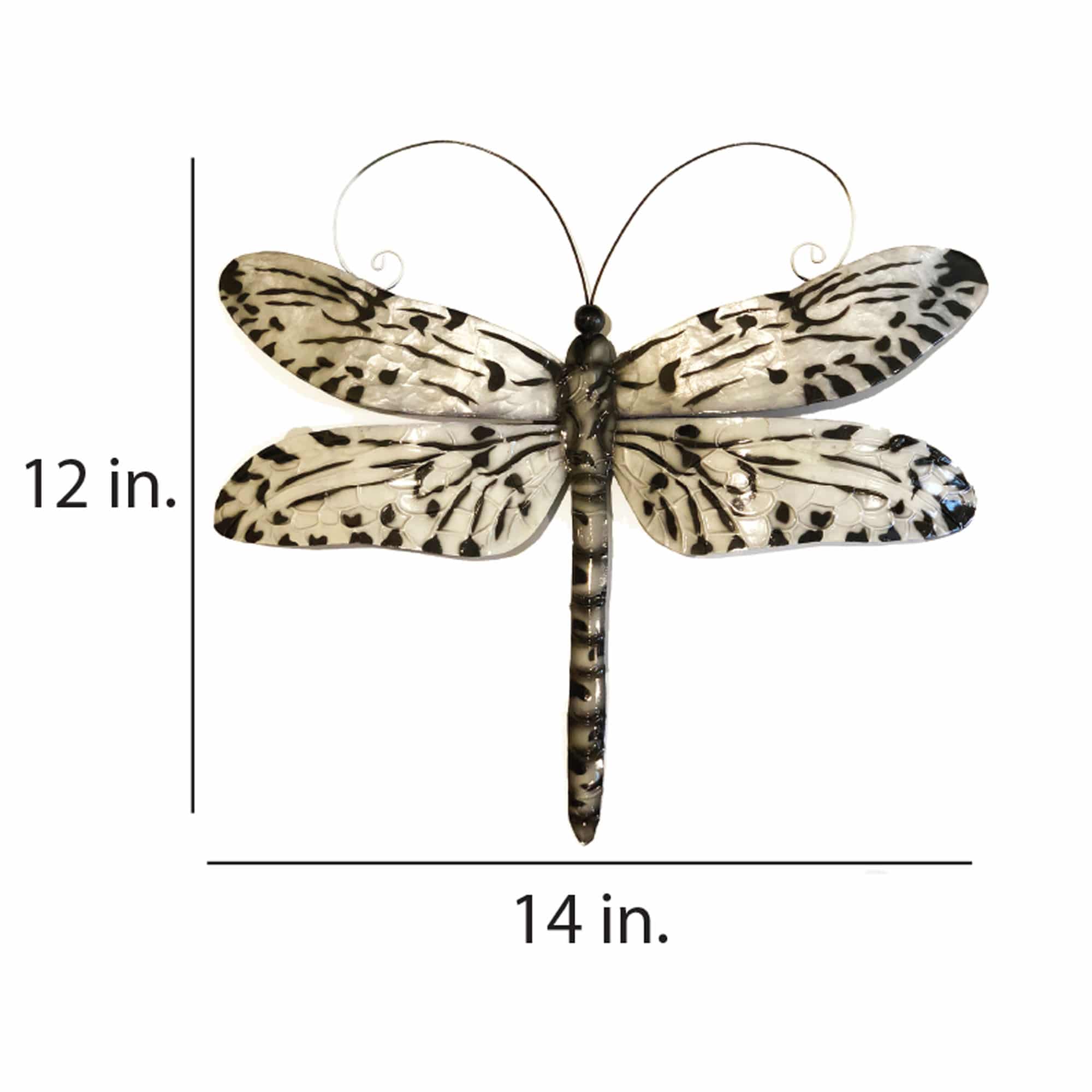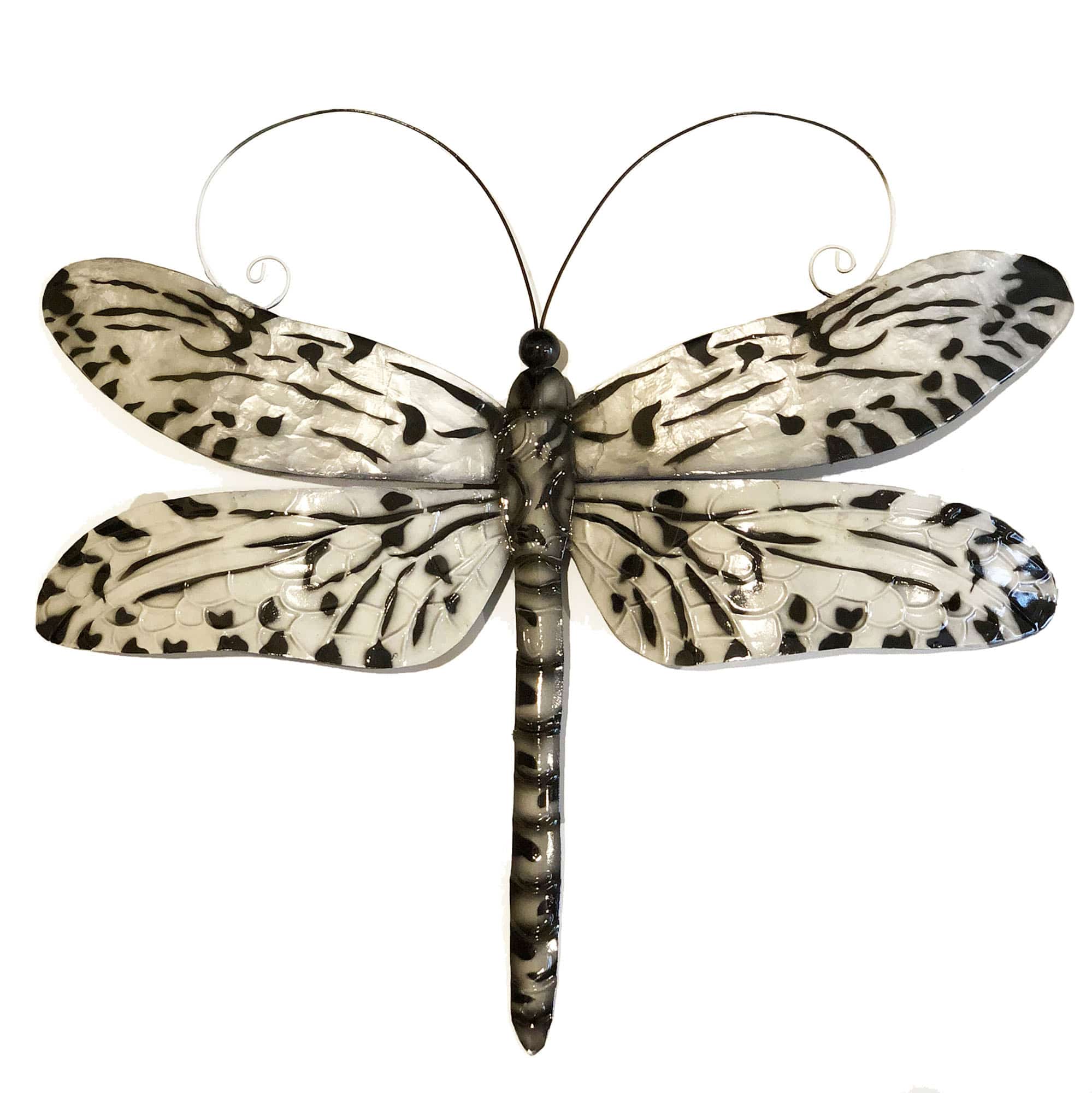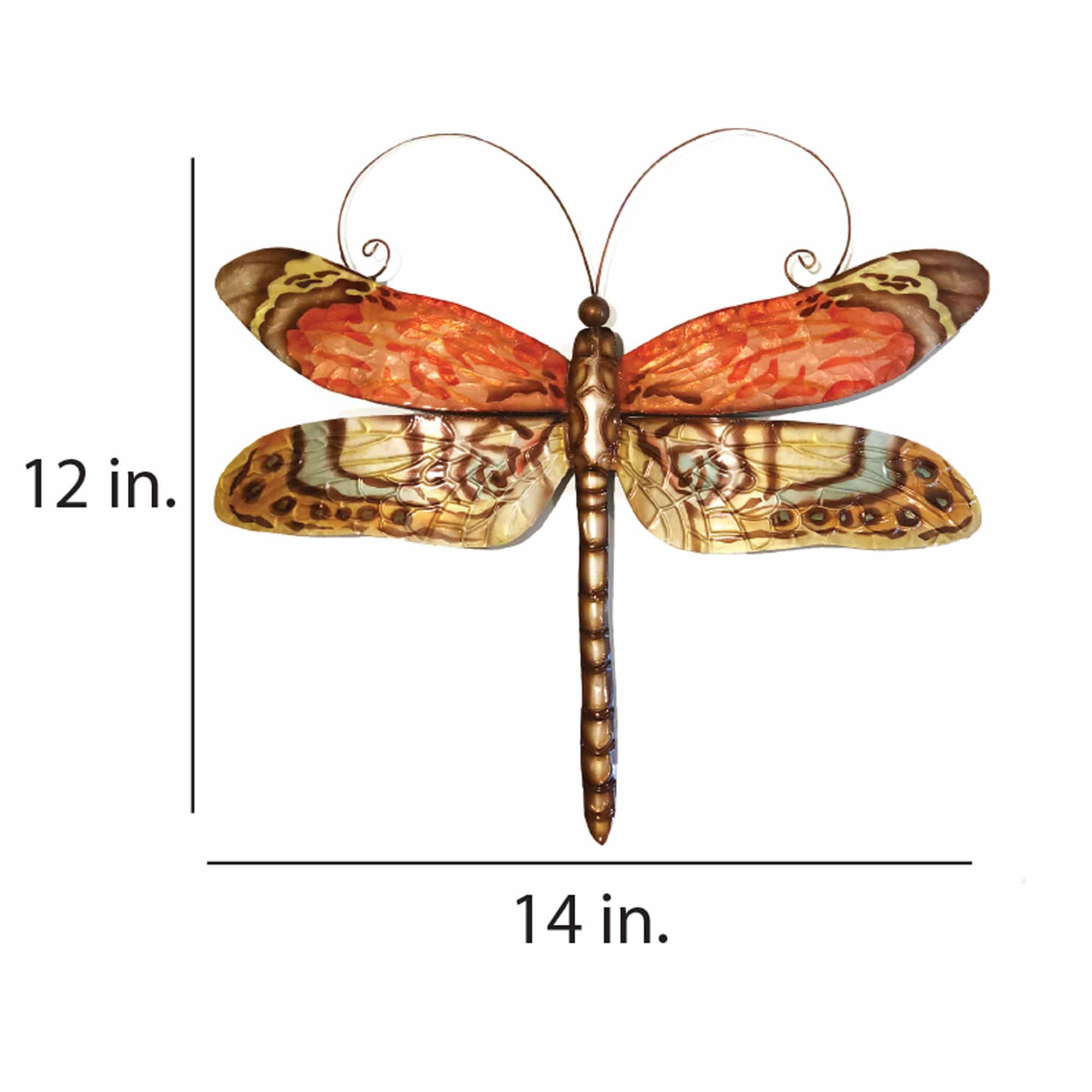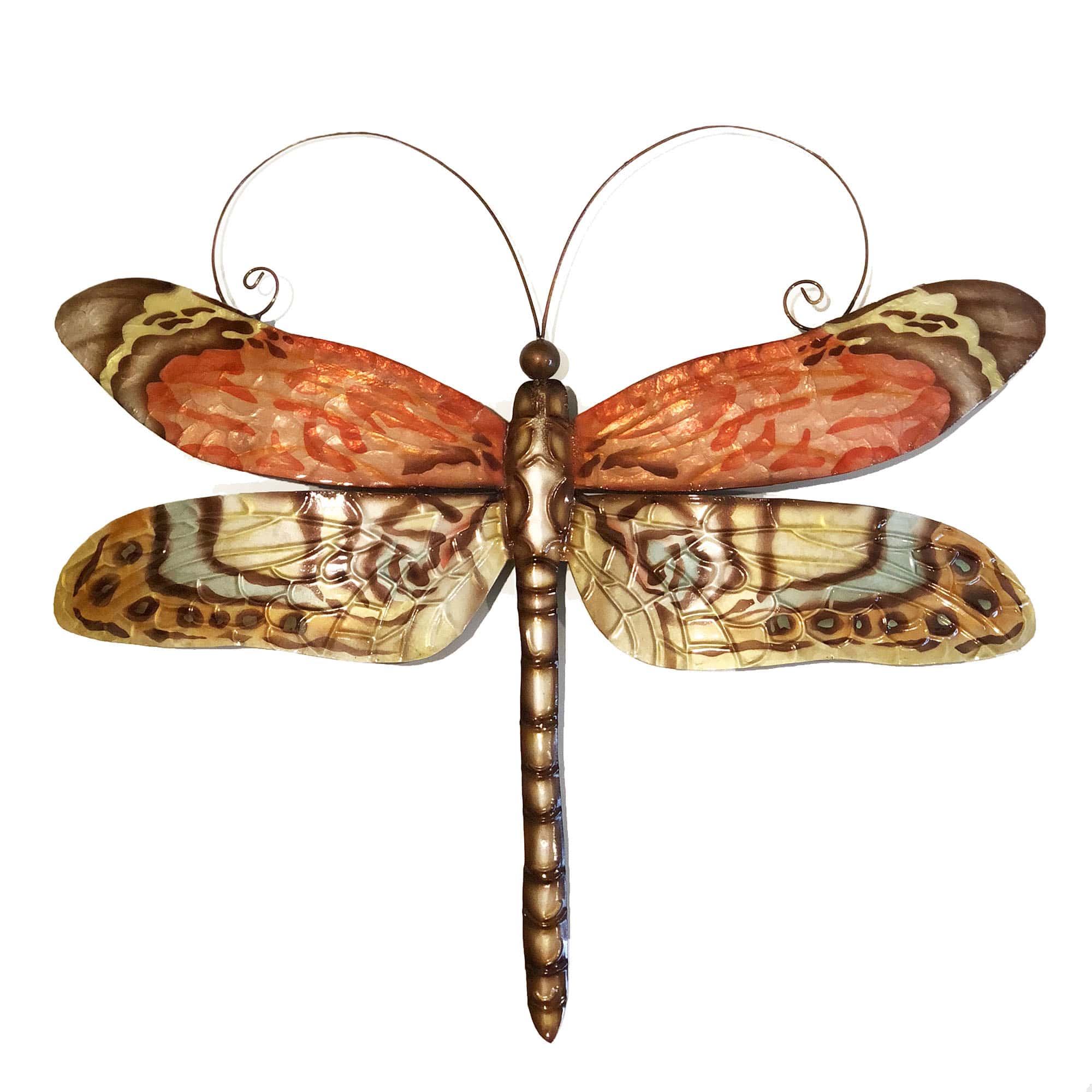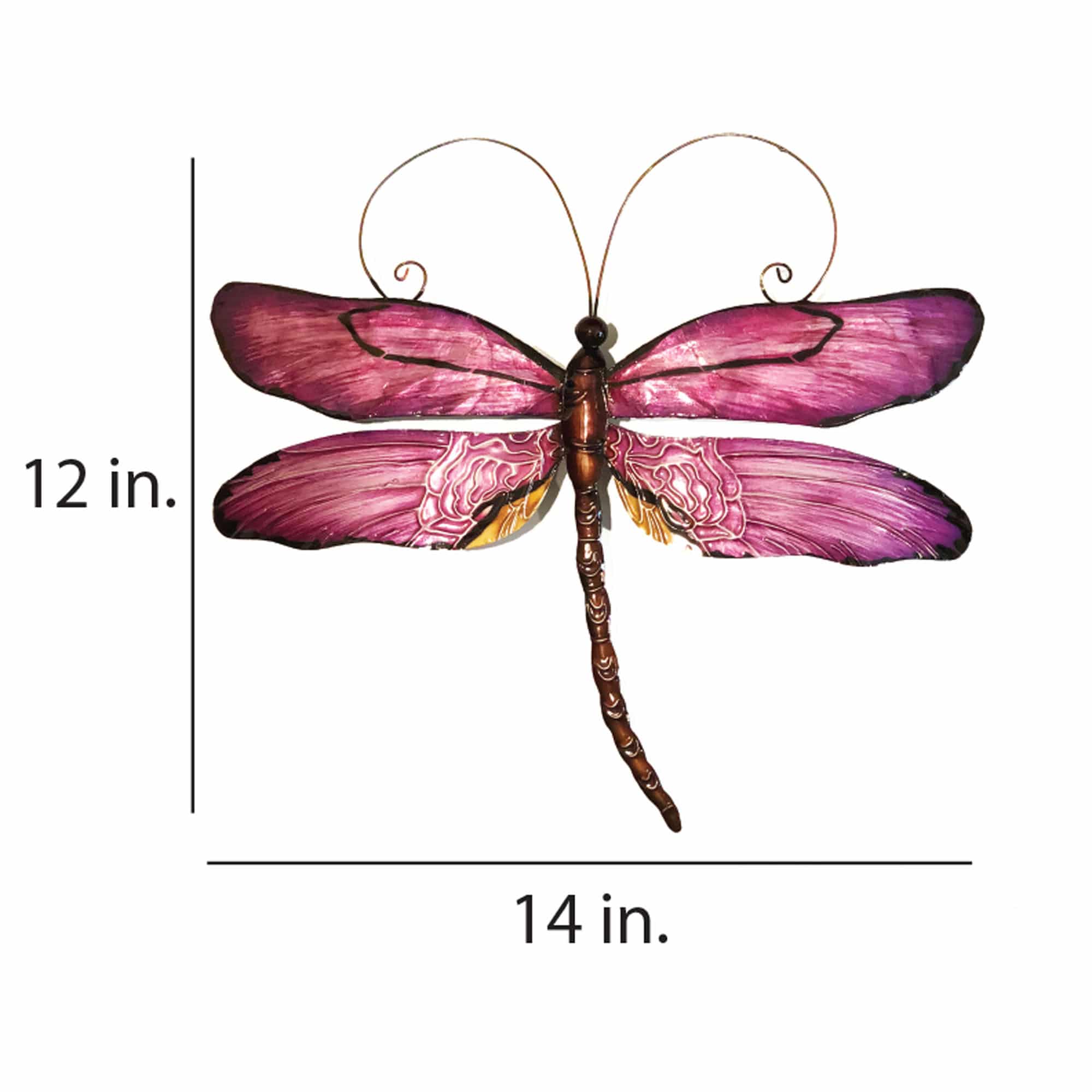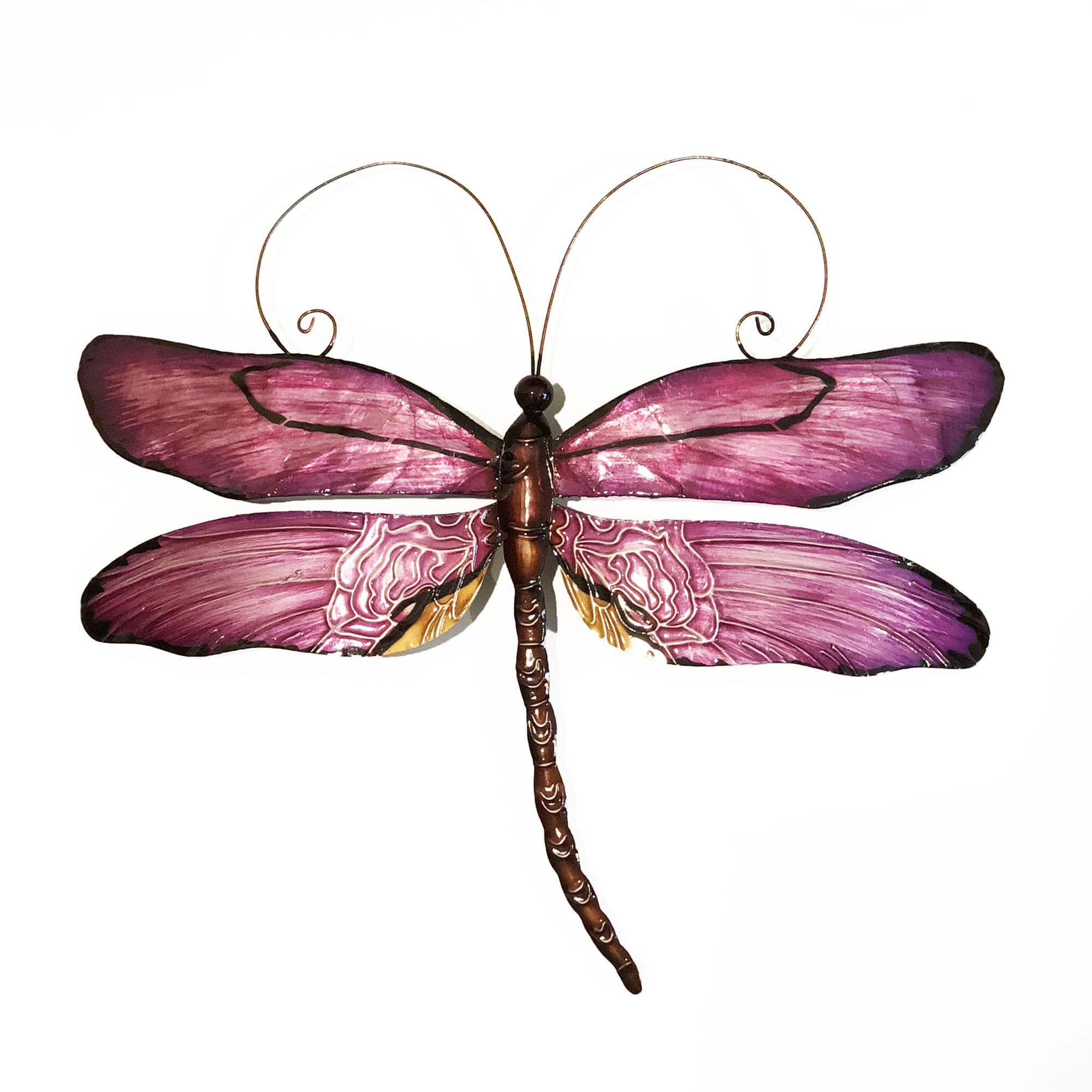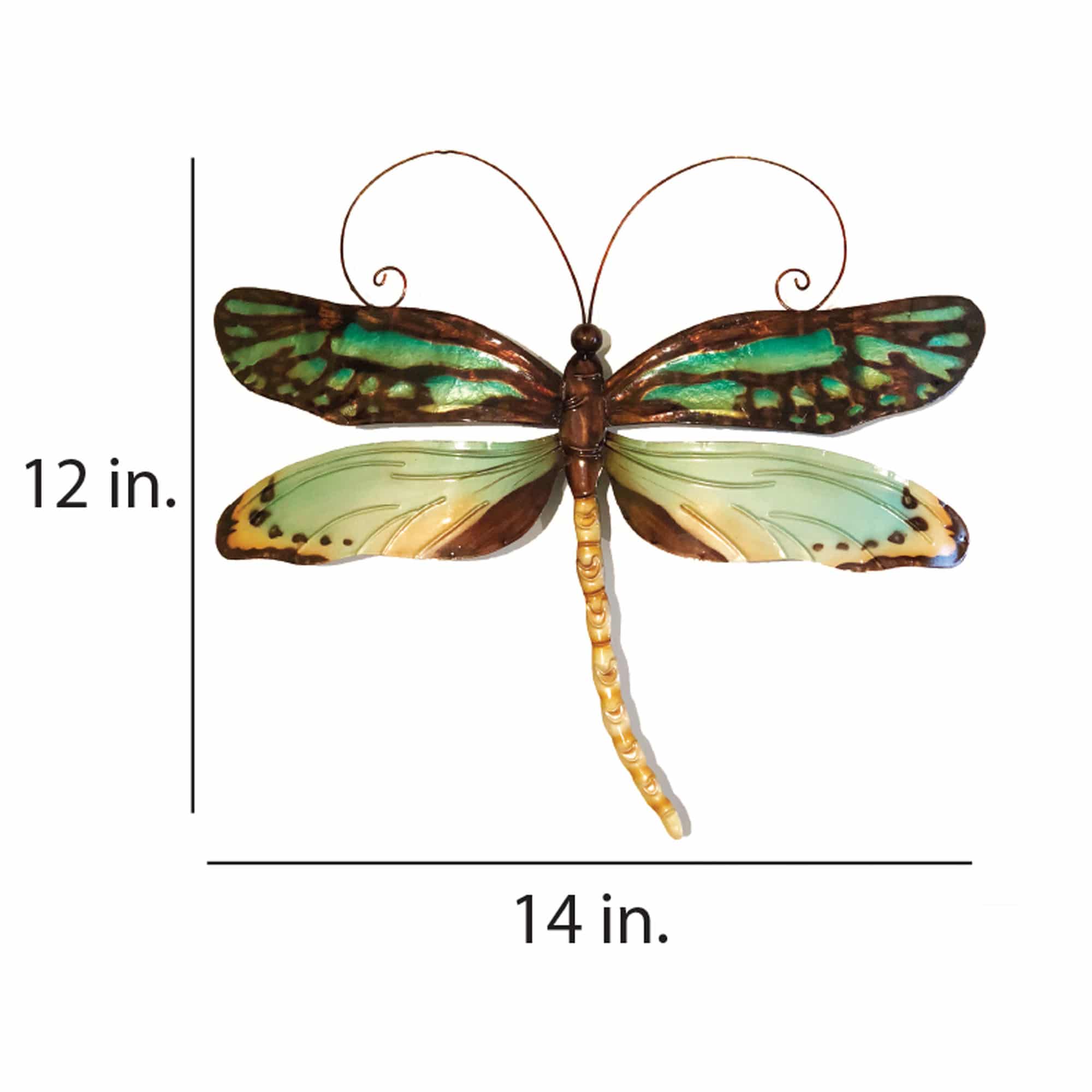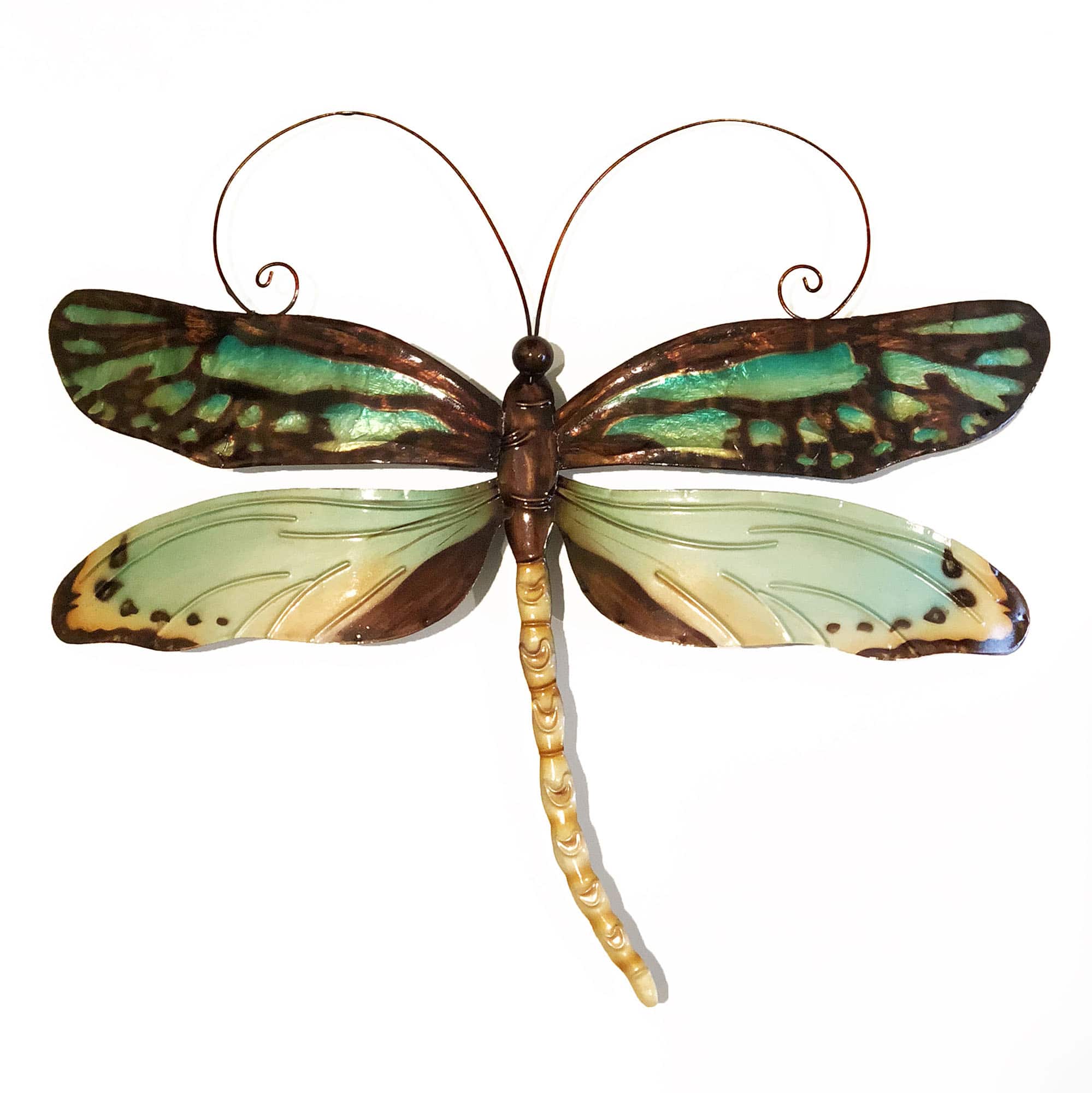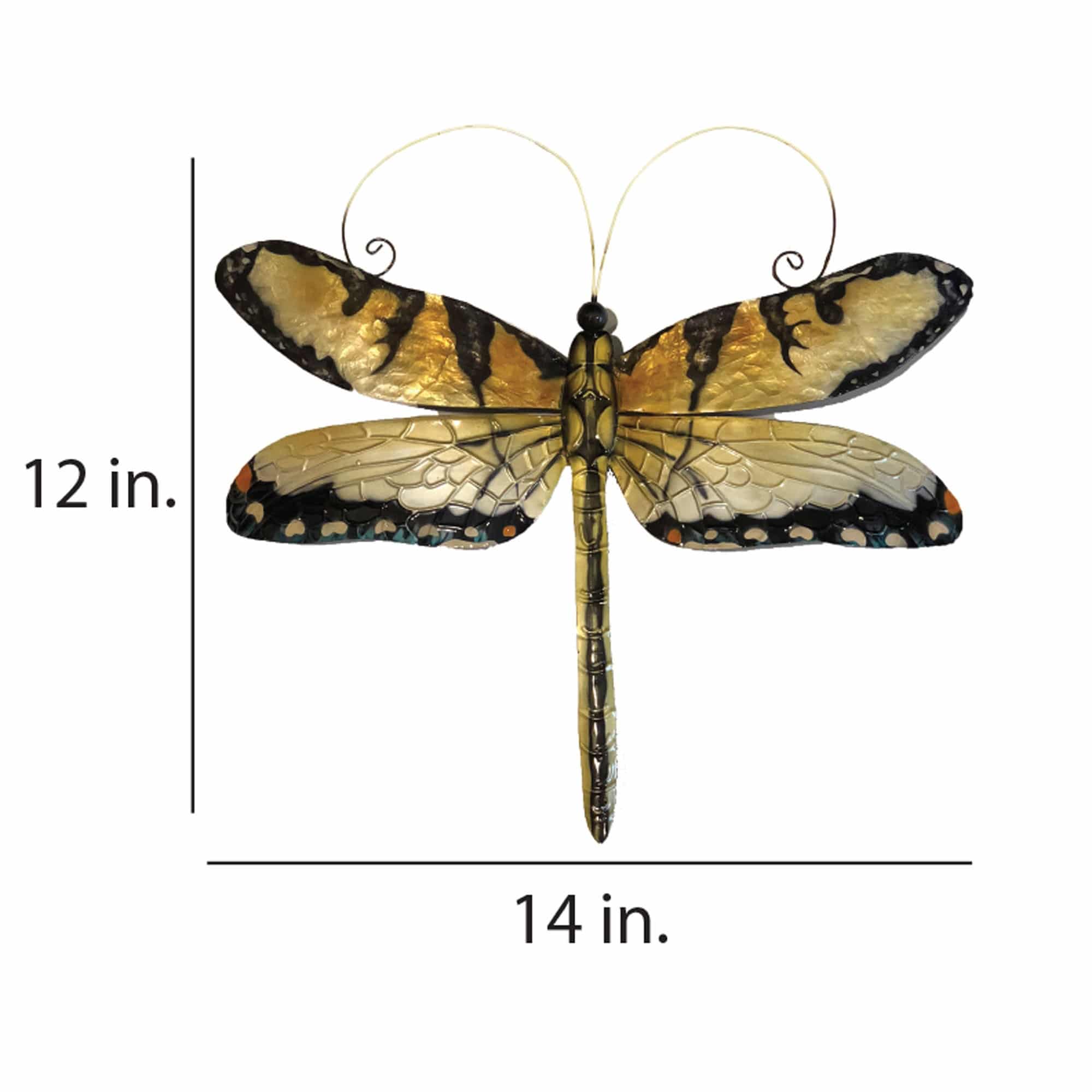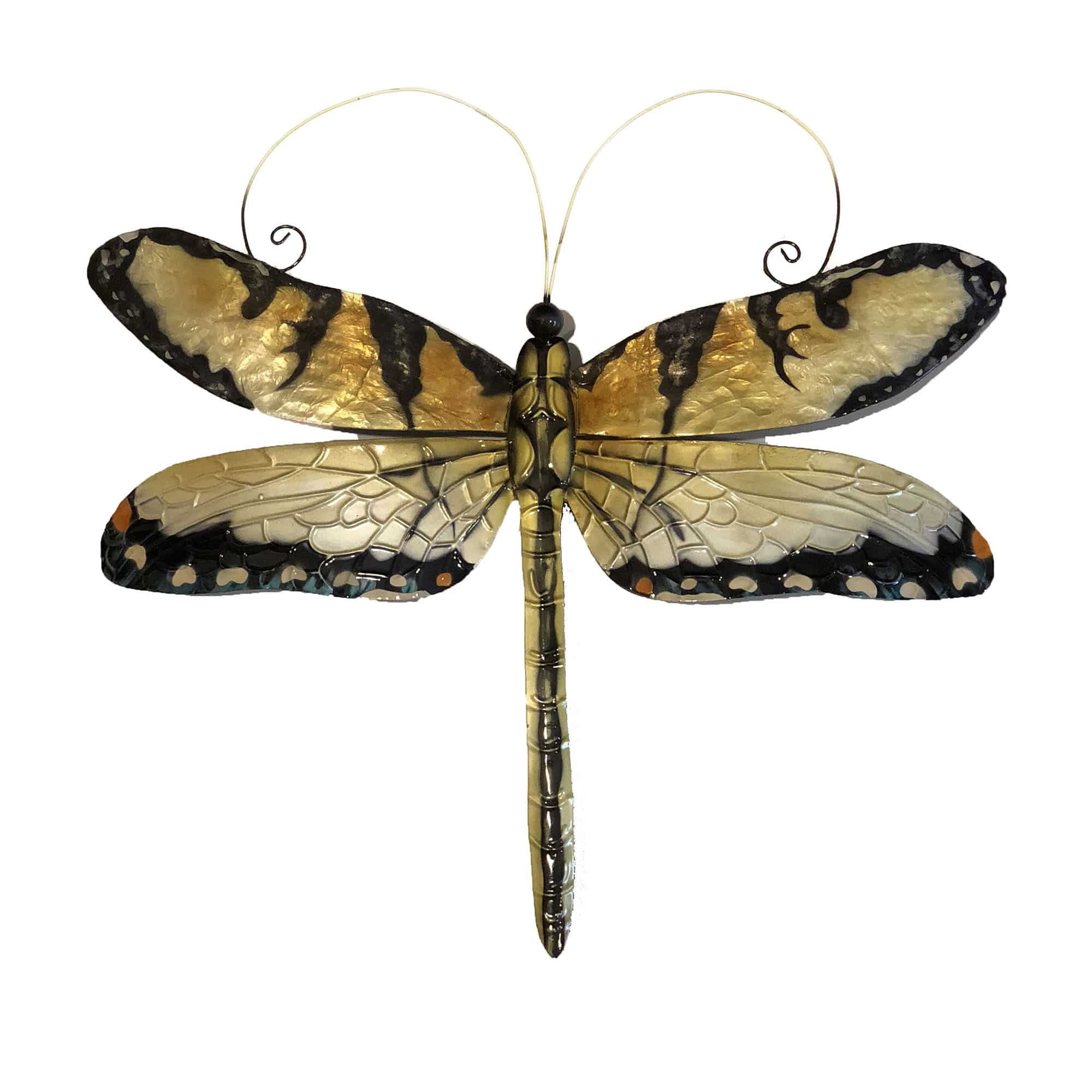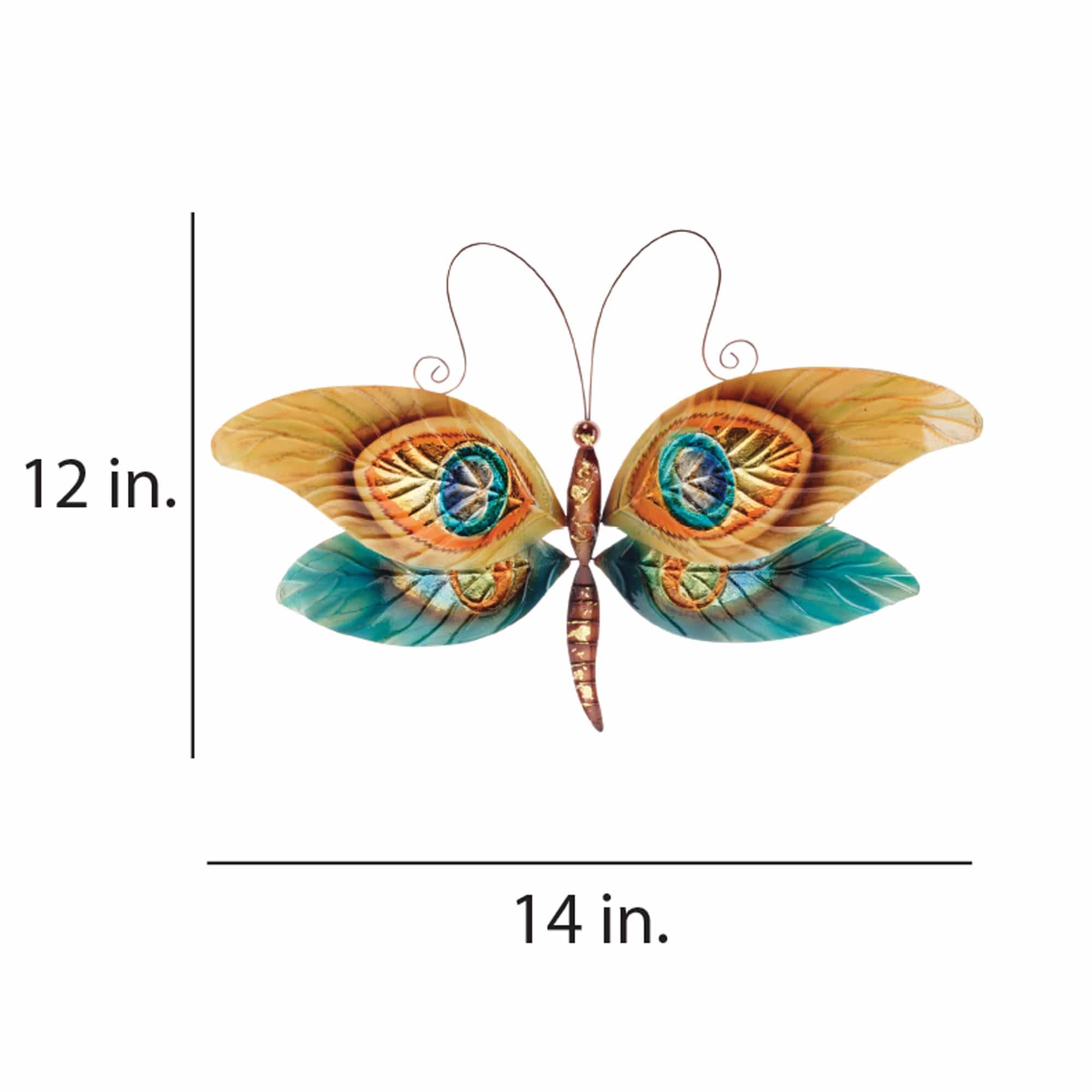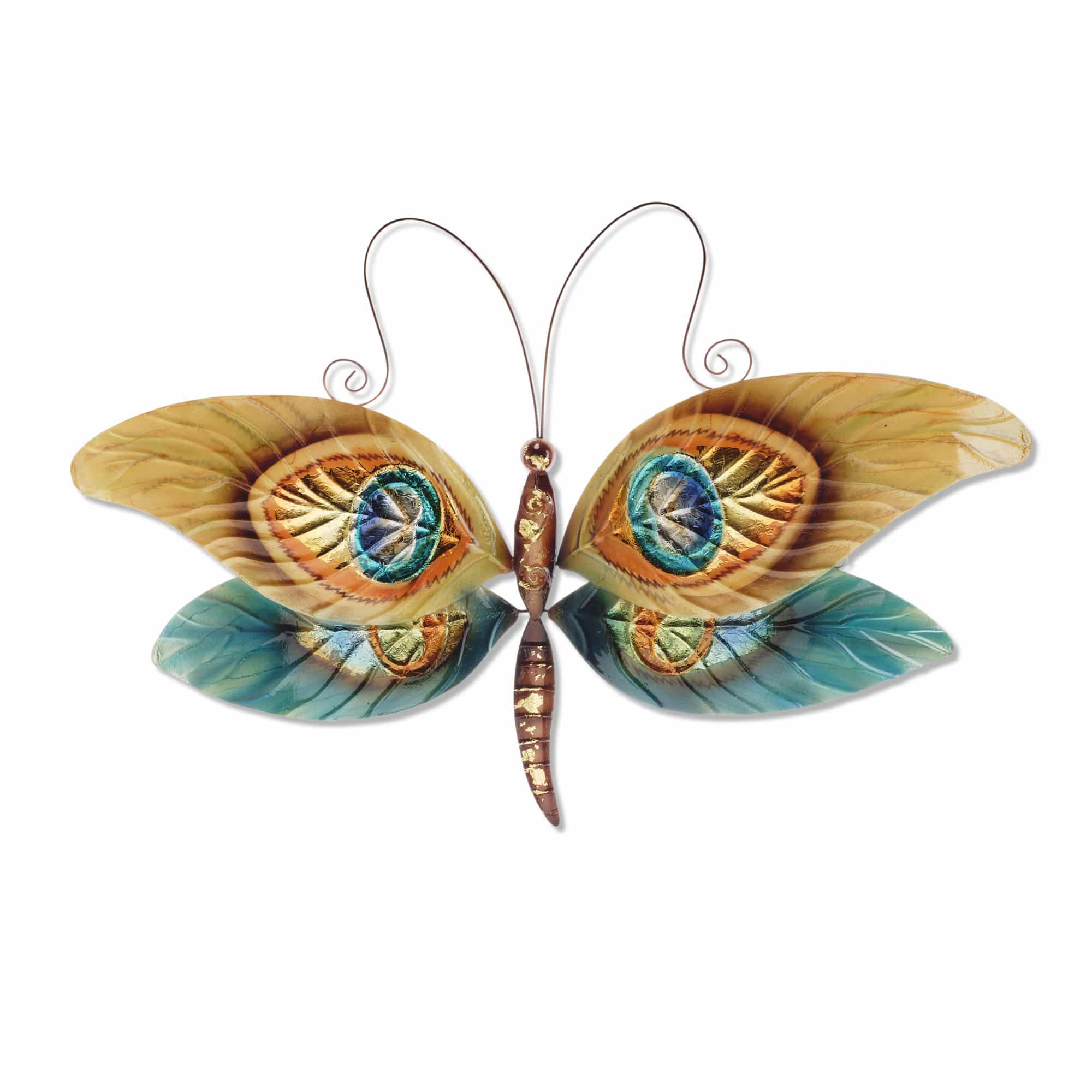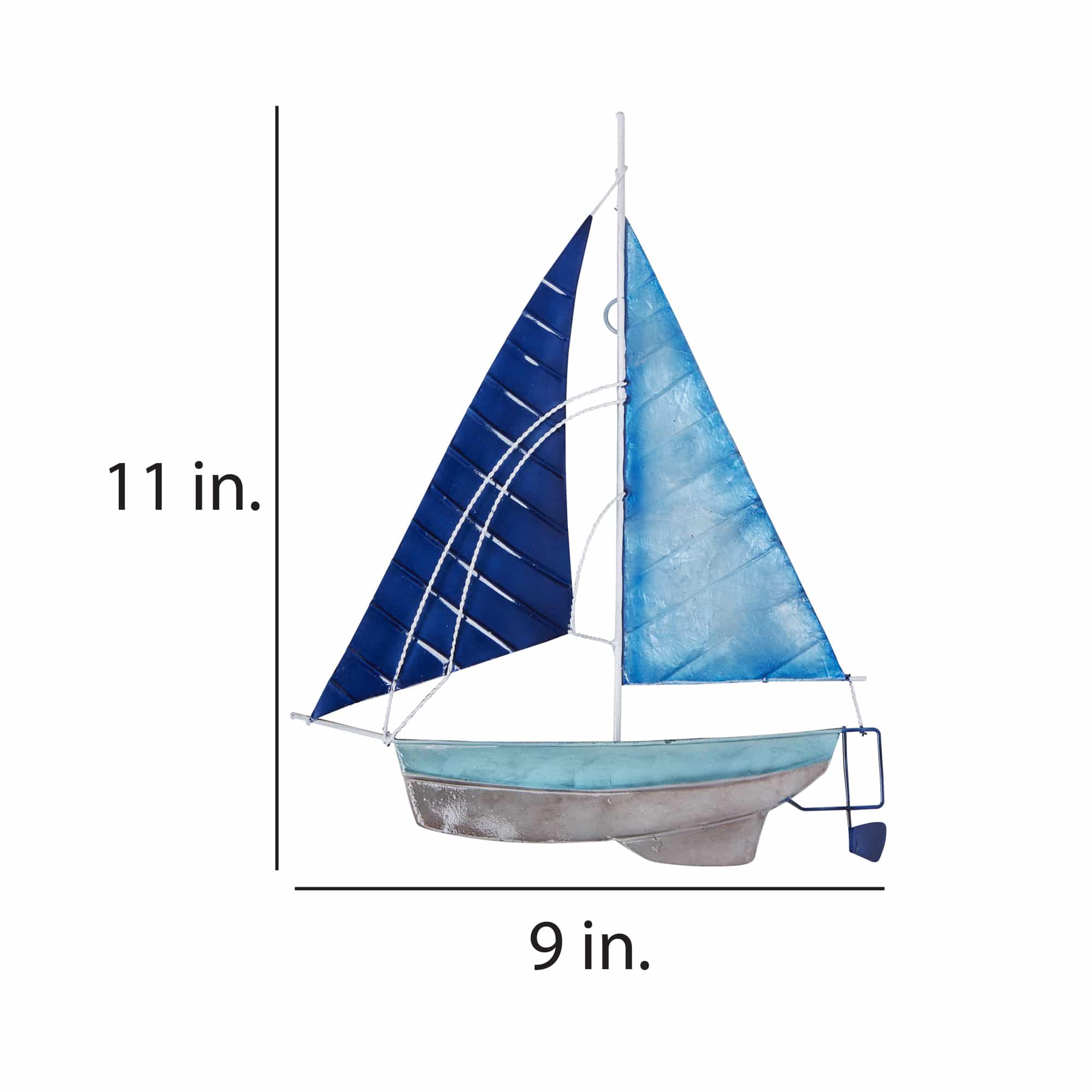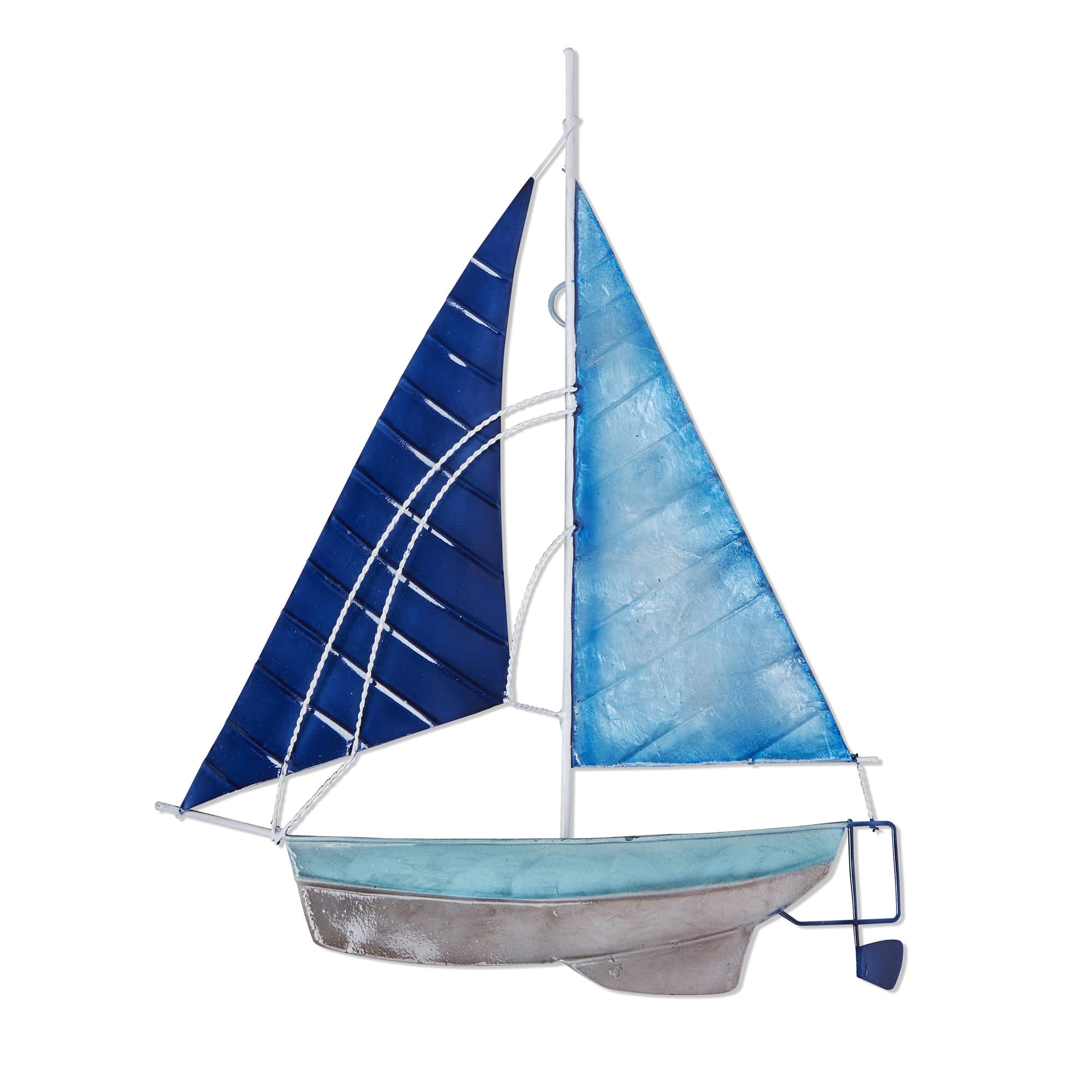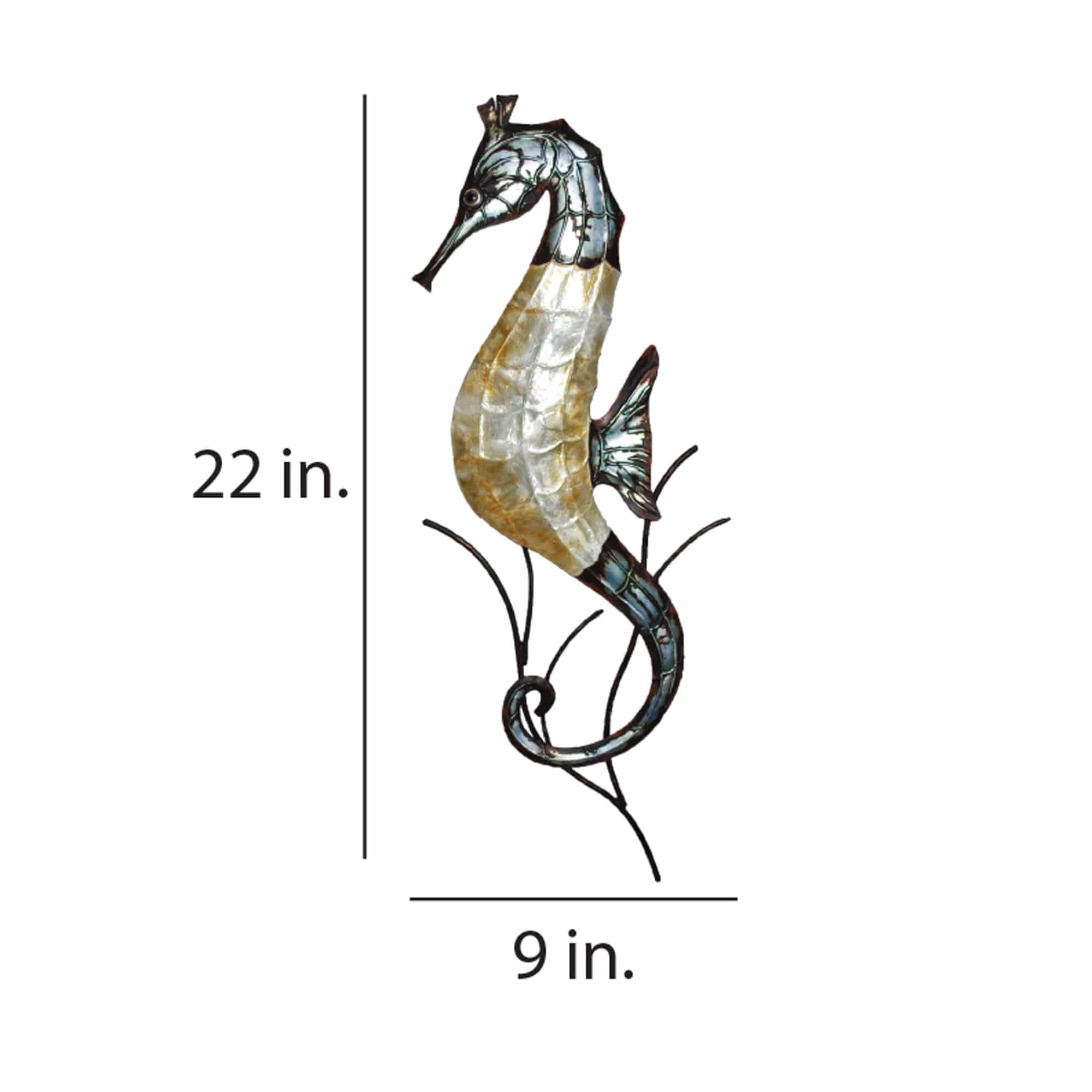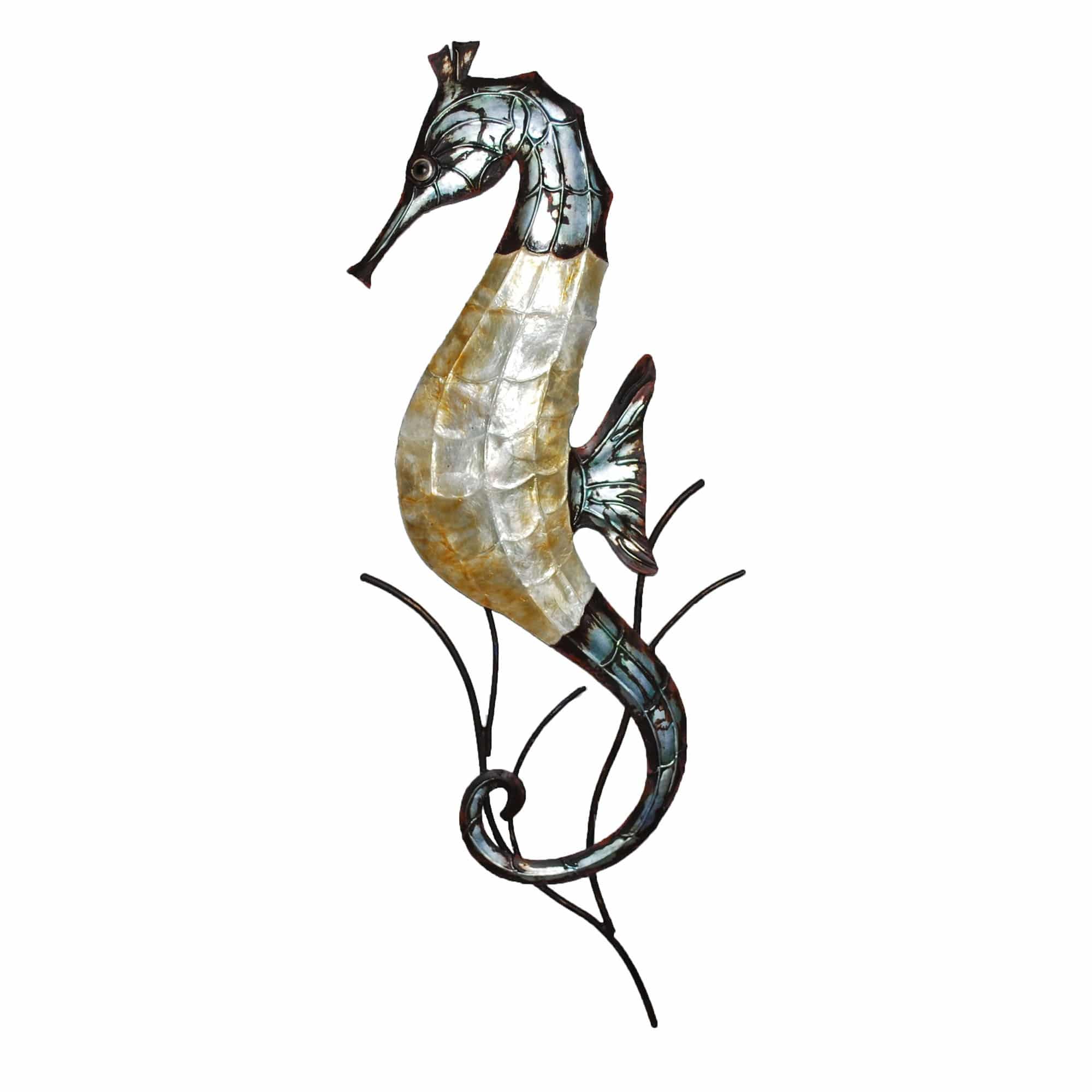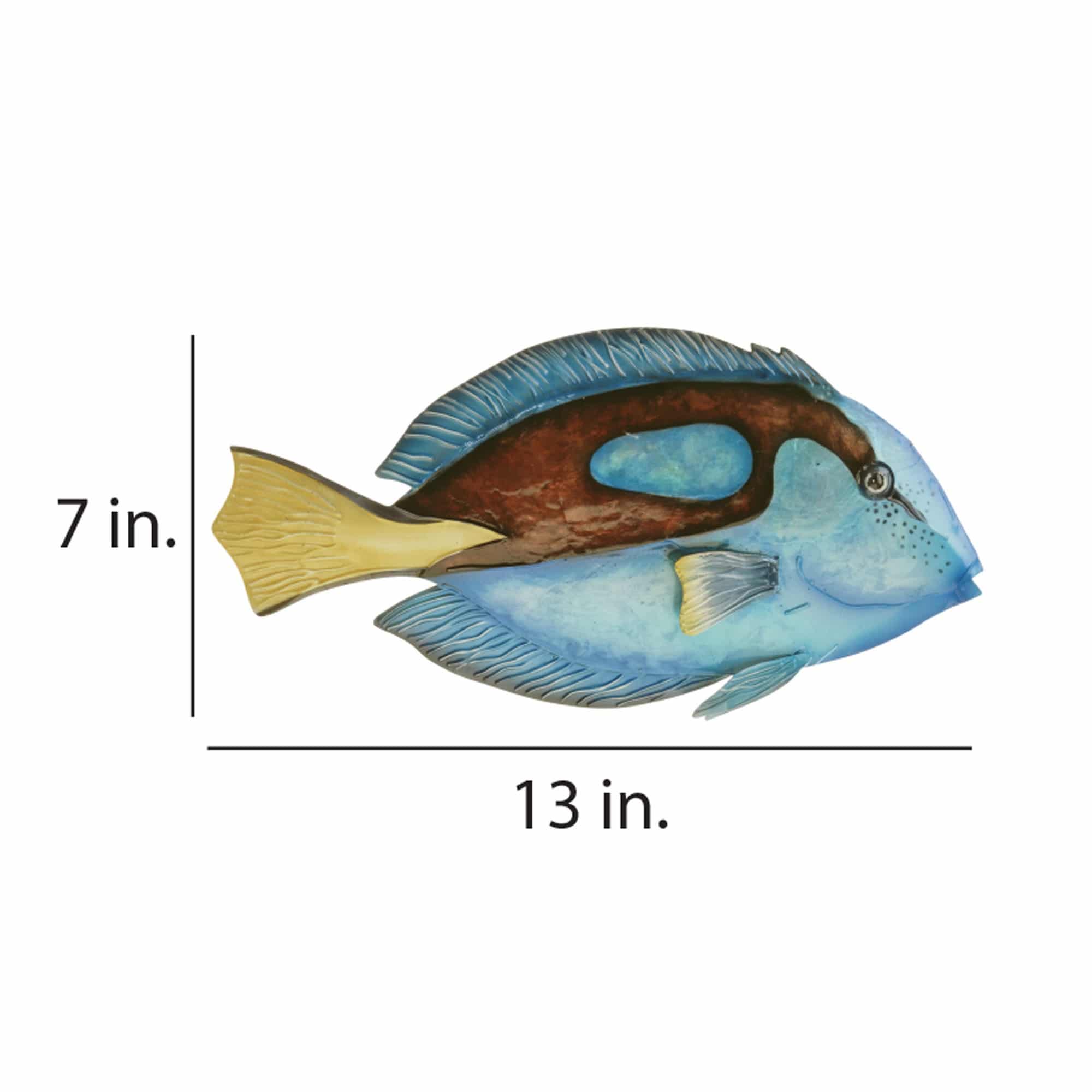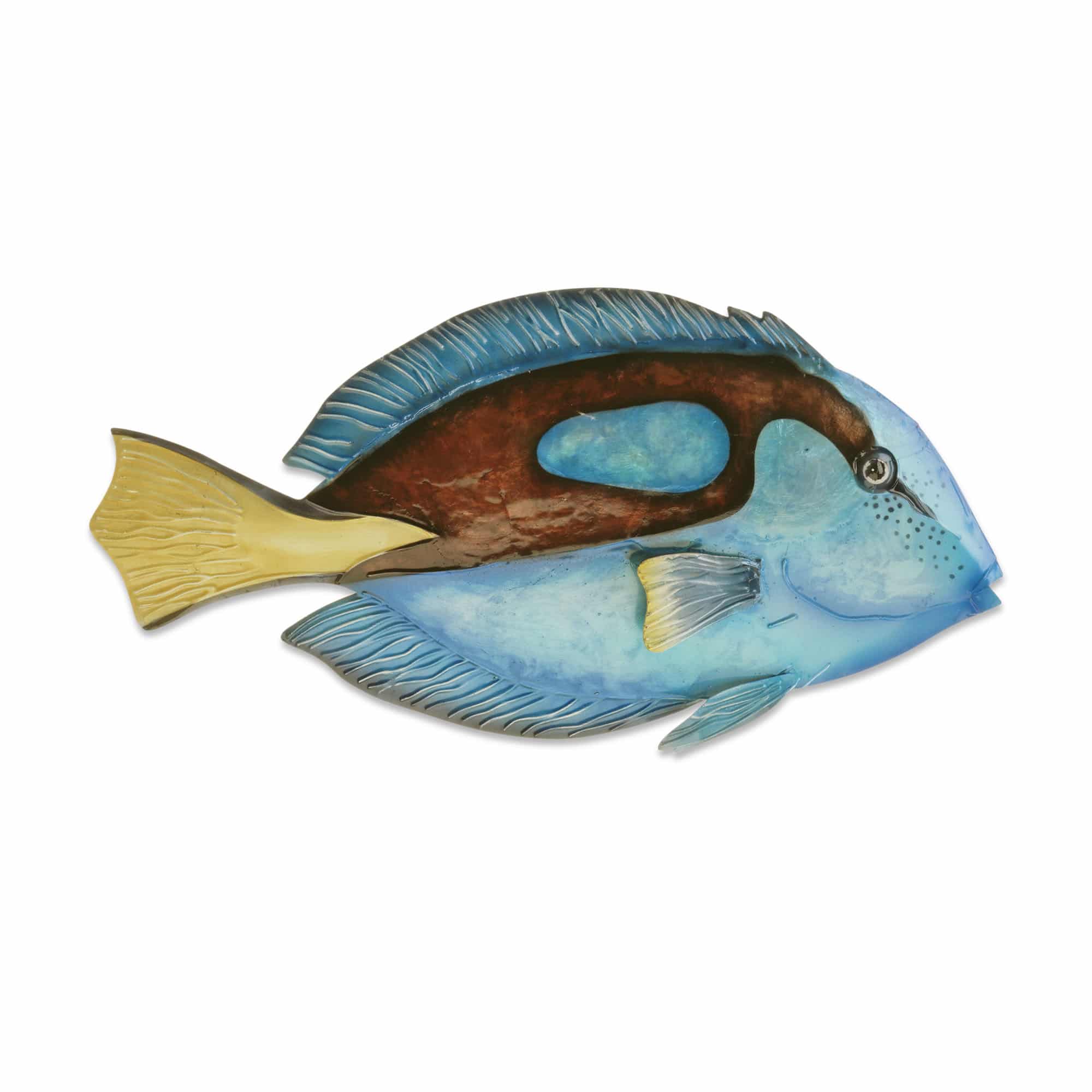Angelic and graceful, the White Morpho butterfly is distinctive and regal. The wings of this butterfly are rather large and stately, particularly when this beauty flies on the breeze from flower to flower. The artist brings this to life by crafting the body smaller compared to the wings. The upper wings are adorned with capiz shell, giving it the translucent color seen in the natural butterfly. The lower wings are constructed from tin and the colors help accentuate the vein structures. The combination of the two will add both color and structure to your wall and your room.
The basic frame of the butterfly is created using tin, which is powder-coated with a black finish and makes this piece safe to use outdoors. The edges of the frame are reinforced using thicker tin wire. The front of this piece is adorned in areas with capiz shell, an oyster native to the Philippines, before being hand-painted and sealed with a water-based sealant. The primary purpose of this oyster to provide a source of food, however, the shell is a sustainable by-product that can be used for decoration. The capiz shell subtly replicates the reflective qualities of butterflies in nature. The entire piece is lightweight and has an eyelet in the back allowing it to be hung using a finishing nail, command strip, or a push pin. Due to it being a natural material, the organic colors of capiz come through as tans and browns underneath the paint.
